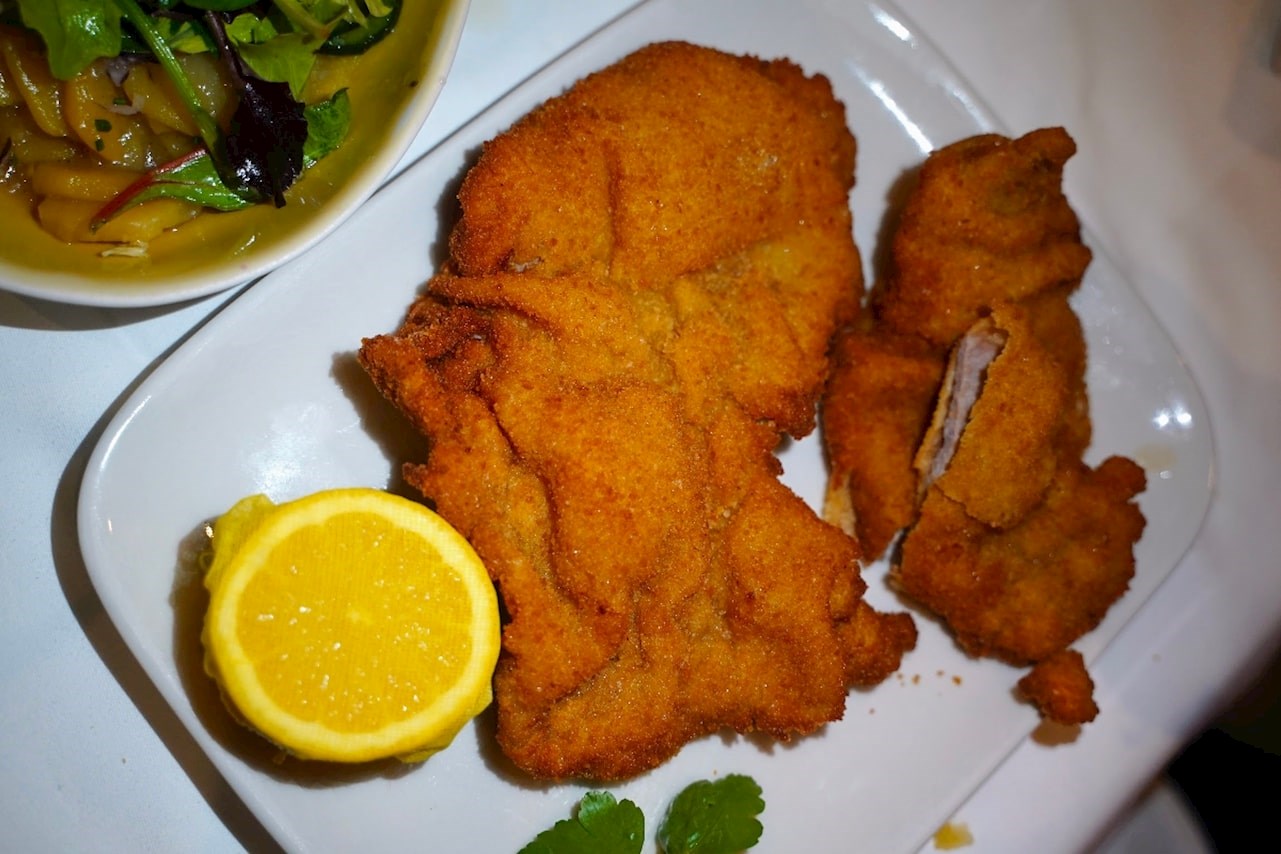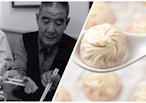DAY ONE: GRÜNAUER
With the song "Vienna" by Billy Joel, we got off the highway into the Vienna center and headed for Grünauer, the first on the list of restaurants that I have chosen as candidates for finding the best schnitzel.
Parking in the center is difficult, especially if you put a Thule on the already tall Peugeot 5008. There are no parking machines on Viennese roads (or I didn't see one), and there is no garage that will accommodate such a tall car if you don't want the ceiling to partially cut off the Thule. But let's leave that topic for the top 10 Viennese garages.
There are hundreds of restaurants in Vienna that offer Wiener schnitzel, one of the few emblematic Viennese dishes (the lack of variety starts to bother you after a few days on a mission like this). Wiener schnitzel and non-Wiener schnitzel are offered by the most luxurious restaurants, fast food chains, and everything in between. There is almost no restaurant without a fried piece of protein wrapped in breadcrumbs. Even vegan restaurants have their kind of Wiener schnitzel.
I tried to pick the best from each category: the most popular tourist traps, the leading traditional restaurants according to TasteAtlas, restaurants recommended by respected local magazines like Falstaff, and restaurants with the best ratings on Google.
What is Wiener schnitzel anyway?
Traditionally, a Wiener Schnitzel is a cutlet of veal pounded thin by a meat tenderizer, then dipped in flour, egg, and breadcrumbs (in that order), and fried until golden - says the official website of Vienna. The official Austrian tourism website goes a bit further: When it says Wiener Schnitzel on the menu, it refers to a veal escalope that is fried out in clarified butter.
Before breading, the meat is carefully pounded, seasoned, and moistened, then dredged in flour, egg and, finally, breadcrumbs. The breadcrumbs are not pressed down so that they souffle when they are baked.
And really, only that (thin cutlet of veal, breaded and fried in clarified butter) is an authentic Viennese schnitzel.
But more restaurants, even favorites among the locals, offer pork schnitzel rather than veal schnitzel. More restaurants are frying them in oil than butter. Some even dare to call the pork variation Wiener schnitzel.
You will also find breaded chicken and turkey schnitzels, but at least nobody dares to call that Wiener schnitzel.
Many talk about the secrets of breading, crumb size, and secret additions to the crumbs that they do not want to reveal.
Some serve it with potato salad, some with boiled potatoes, and some with other salads. Wine is usually drunk with Wiener, not beer.
Whichever option you choose, it is crucial that the piece of meat is not tough, that the crust is crispy and not greasy, and that each bite is a great and delicious combination of soft meat in a crispy breadcrumbs wrapper.
We believed that almost all of them would be good, but which one would be the best?
Grünauer was our first candidate. A highly rated restaurant that's favorite among locals, slightly off the tourist itinerary, and highly ranked on TasteAtlas - it ticked all the boxes and seemed like a good first choice.
GASTHAUS GRÜNAUER
The great, old, noble, early spring atmosphere of Vienna was in the air in the beautiful, central, cold Viennese street in front of the restaurant, and we felt it even more so when entering the warm, intimate place.
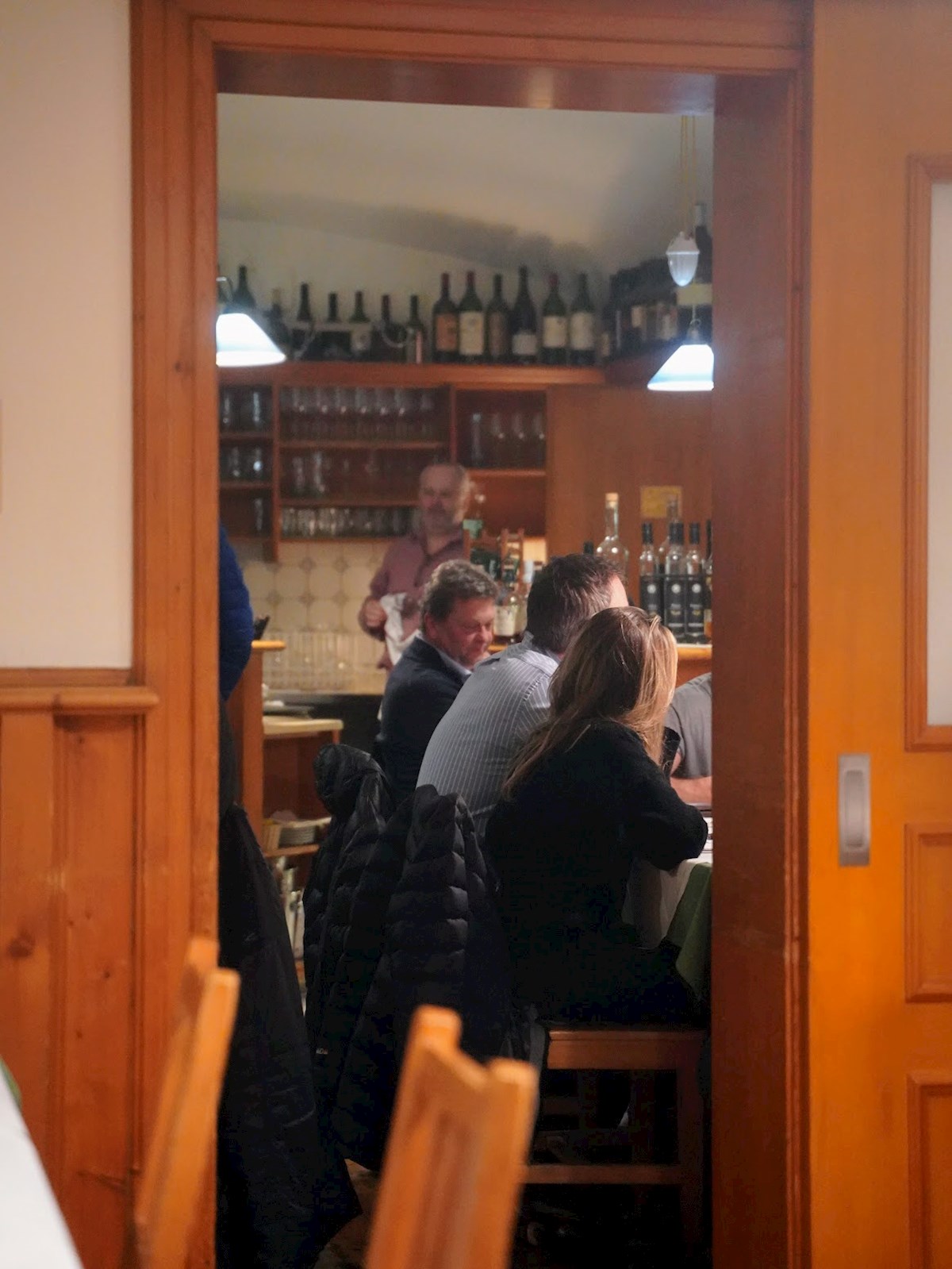
Guests are only Viennese - or at least that was the impression I got.
The service was terribly slow. What many see as poor organization, I also see as bad organization. On the other hand, I often also see a sign that nothing is reheated, which means that everything is done fresh.
In our search for the best Viennese schnitzel, we realized that the very first restaurant did not have real Viennese schnitzel at all. They had the pork one.
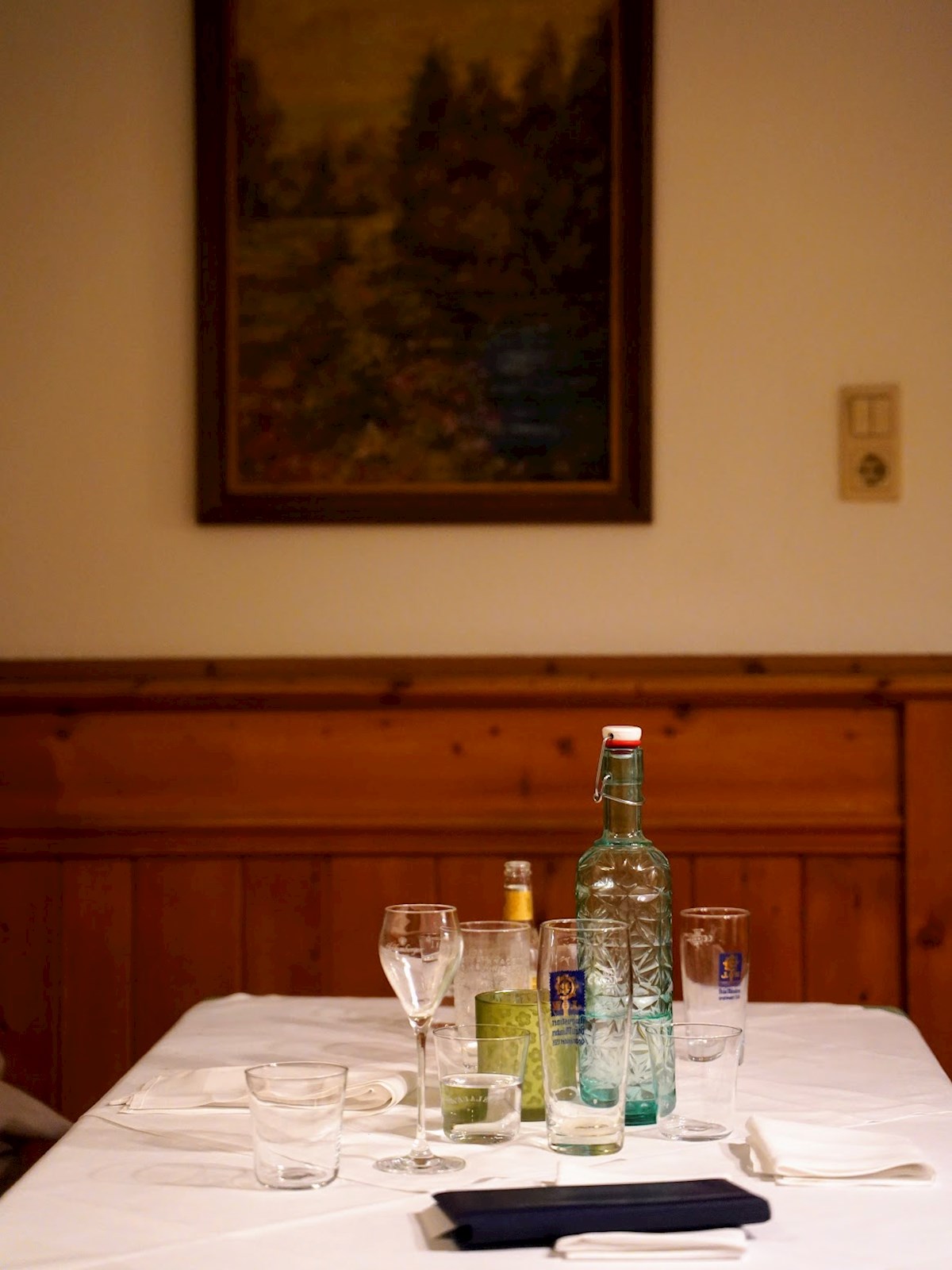
Spending an hour or two in Grünauer is a real pleasure, especially with a great Grünauer Veltliner: wonderful Grüner Veltliner with a restaurant label, a super-citrus wine reminiscent of orange juice, only better and cheaper. Good wine in Vienna is, for some reason, always cheaper than good fruit juices and even good coffee.
The dinner started with a tiny but very tasty soup with the famous Viennese sliced pancakes. Those Viennese soups are a great thing; when they're intense enough, it's practically Viennese ramen.

It was followed by Gerostete knodel mit ei - sliced dumplings in something of an omelette. Viennese food as Viennese as it can be, very nice if you like Viennese food. We tried another heavy Viennese dish, a roll with cucumbers, but it was too dry.
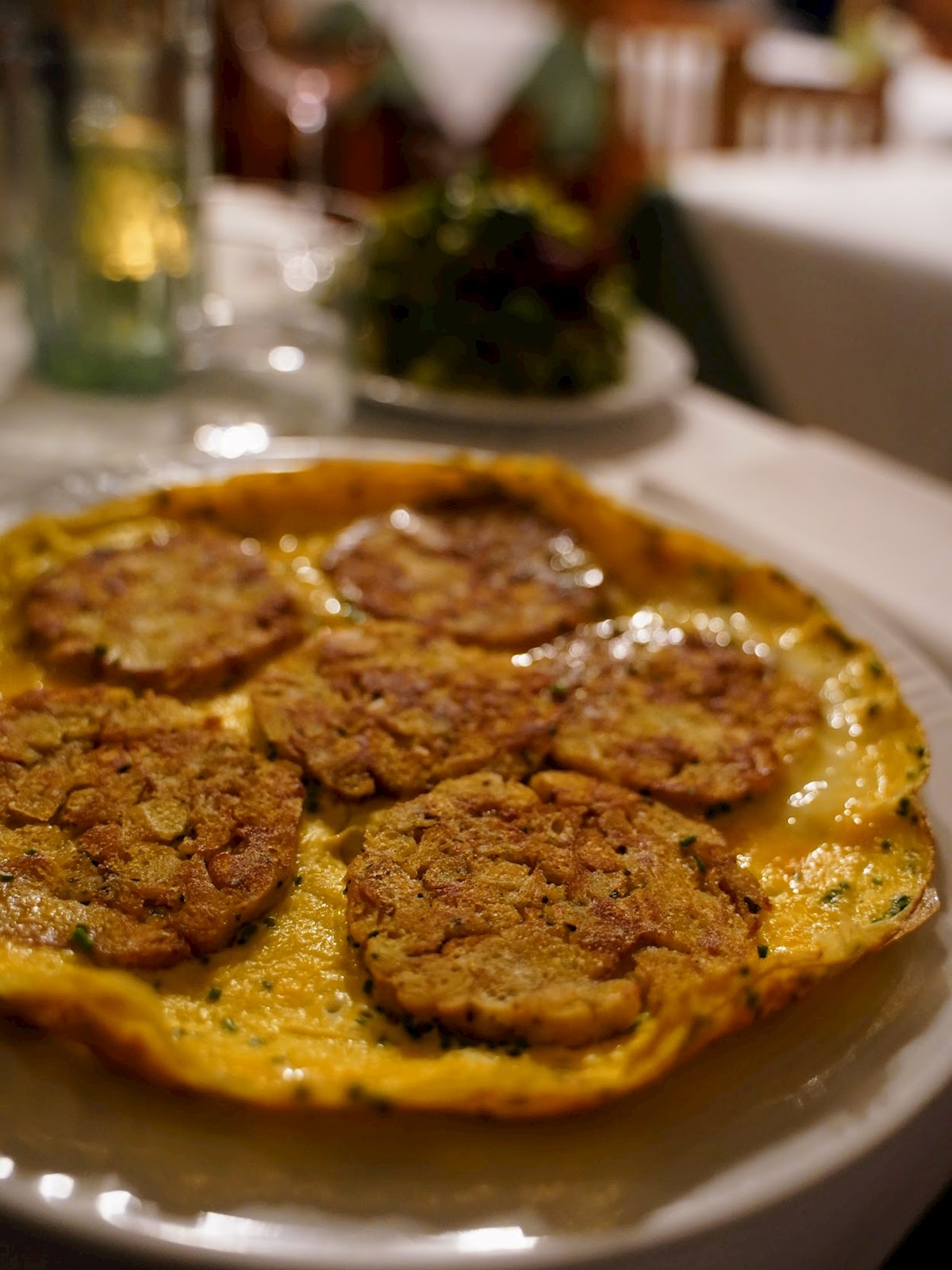

And then came the star of our trip.
But (non-)Wiener Schnitzel did not knock us off our feet. The pork was a little too porky in taste and too dry - (though pork is always too dry, I guess). It was without fatty or lumpy parts. Breading was not crispy enough, and it was just a bit soggy. Schnitzel is very small, although I do not consider the size to be decisive for the evaluation of it. It was served with a rather nice cucumber salad, sugared, but that's why it was nice.
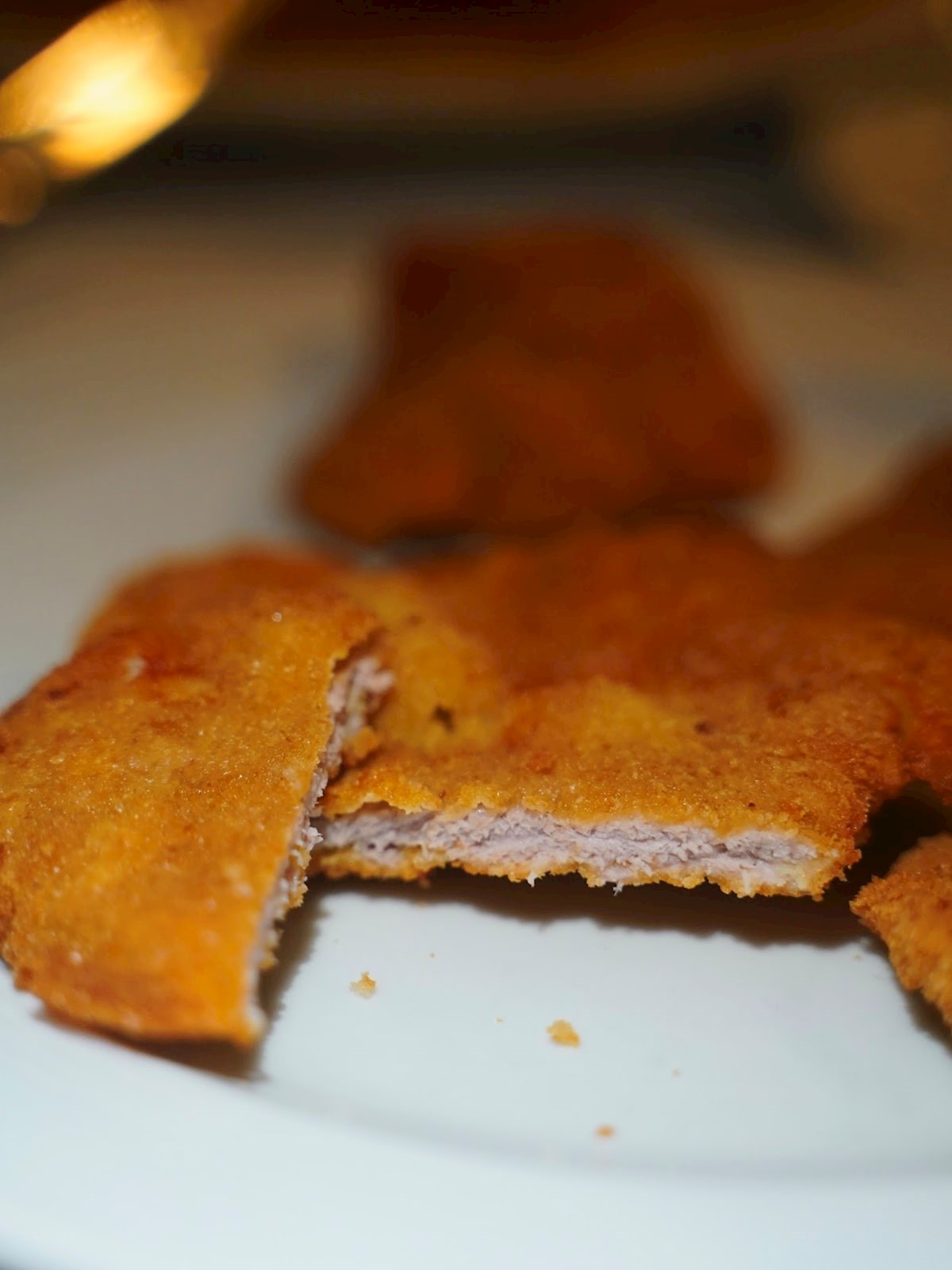
We ended the dinner with very nice (and again Viennese-heavy) pancakes with poppy seeds.

GRÜNAUER WIENER SCHNITZEL: 3.5/5
DAY TWO: GASTHAUS ZUM SIEG
"In search of the best Viennese schnitzel" is a relatively effective title, but we still have to try one, and it's not gonna happen today.
In fact, we were not looking for Wiener schnitzel at all. Not only that we accept the pork in oil variation instead of veal in butter, but today we're not trying schnitzel at all. We went for stew. Austrian goulash, to be more precise. Rindsgoulash, if done right, should be like this: the beef should be tender and the gravy dark, smooth, and thick.

Gasthaus Zum Sieg is low-key, with just a few Google ratings, a place where only groups of Viennese locals gather.
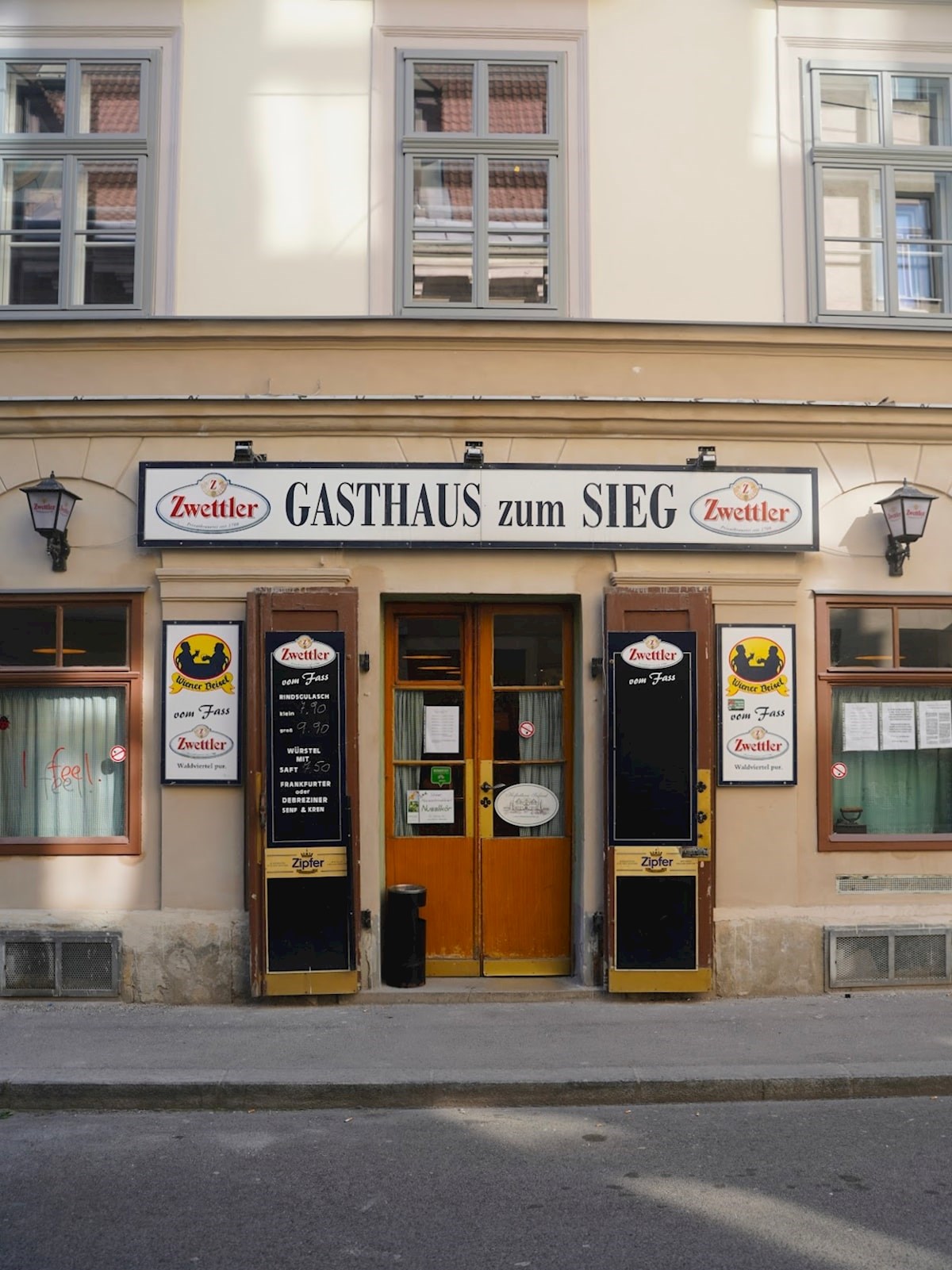
When we called to make a reservation, the gentleman on the other end was quite surprised by our call and told us in amazement: "But we only make goulash!". "We know", we said, "that's why we're coming.".
There are too few narrowly specialized food places in the world. Those who make one dish, but then put all their cards on that one dish.
When we arrived at the restaurant, no one had any idea about our reservation, but we got a table. A forgotten reservation, a lady (the owner?) who does not smile and shakes her head in displeasure when asked about the reservation, the inability to pay by card... none of that changes the fact that here is really the best goulash in Vienna. And I can say that even before I tried the others. Yep, it's just physically impossible to make it better, and that's that.

The beef was tender, and the gravy was dark, smooth, and thick. It was a bit spicy, just how it should be, with a strong meaty taste and the right texture - which is always an indicator that no shortcuts were taken in the preparation.

Courtesy in restaurants is overrated, and so is paying with cards. You should always carry cash in Austria anyways. This goulash with a fresh crispy breadstick is a dish I would repeat every time I'm in Vienna.
GASTHAUS ZUM SIEG: 4.5/5
WIENER SCHNITZEL: -
RINDSGOULASH: 5/5
DAY THREE: BUFFET TRZEŚNIEWSKI & SCHNITZELWIRT
BUFFET TRZEŚNIEWSKI
Even on the third day of our search for the best schnitzel, we didn't open the day with schnitzel. Instead, we decided to visit the Viennese icon, Trześniewski.
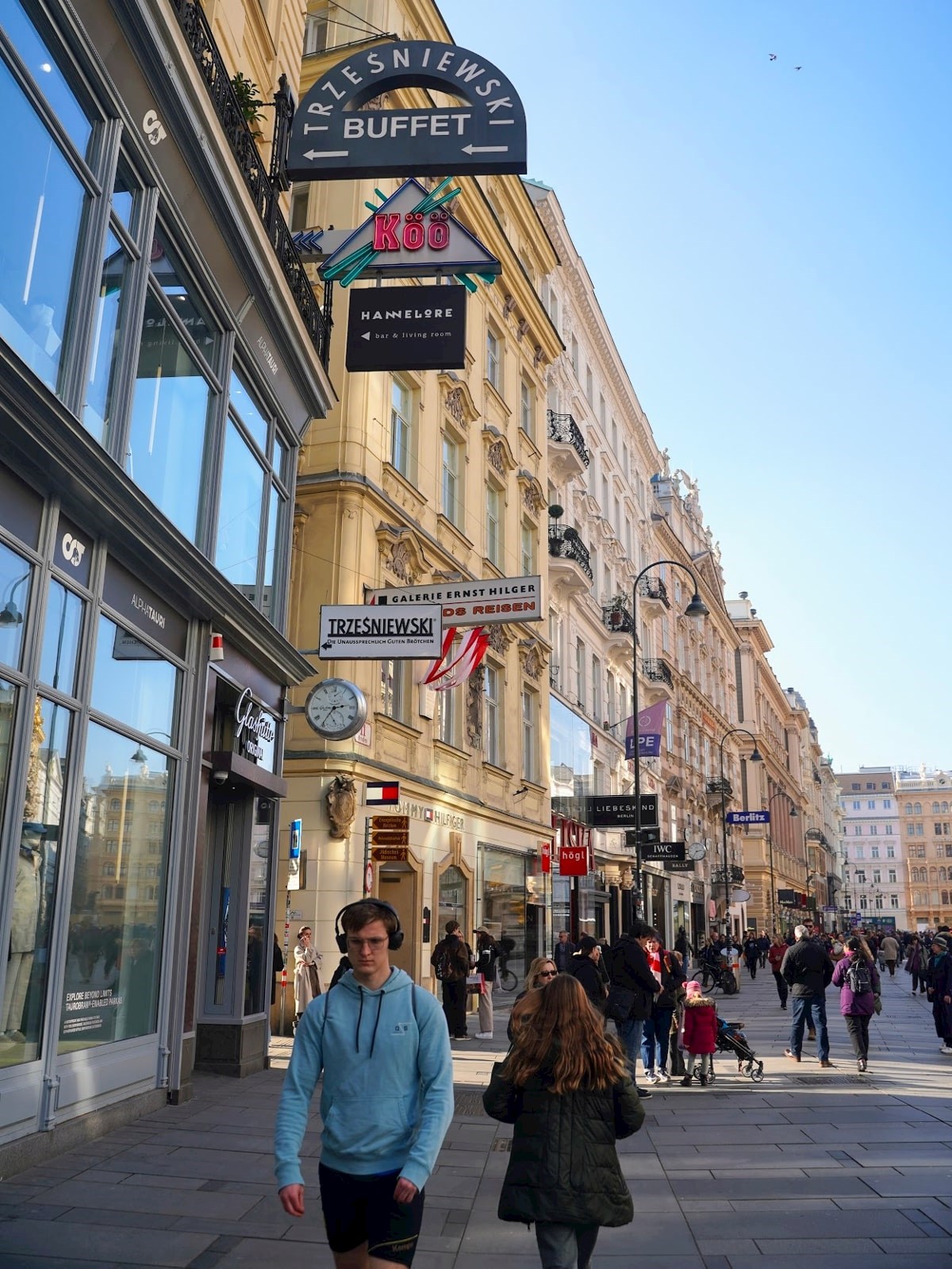
Trześniewski has been around for 120 years, and given that it is difficult for restaurants to survive for a year, the fact that people have been wanting to eat in this place for more than a century should be enough to make you want to eat there.
Trześniewski did not disappoint. The place is charming; you enjoy standing in line and waiting to be served because that line is a kind of foreplay, and you know that every worthwhile goal requires a certain amount of effort and foreplay.
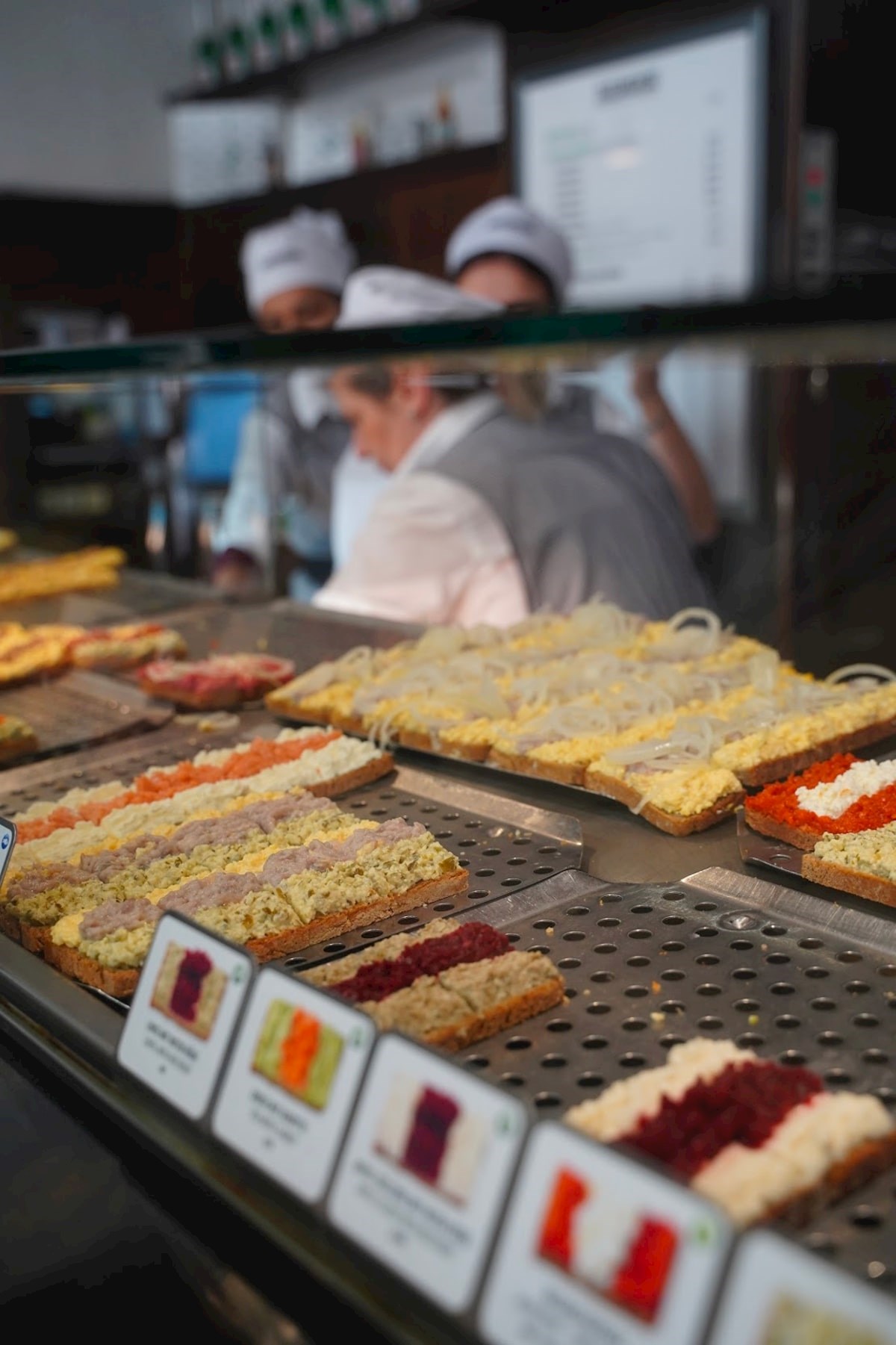
Trześniewski doesn't do anything other than offer countless colorful little open sandwiches on rye bread, with various toppings, mostly egg-based. Eggs mixed with beets, eggs mixed with herring, eggs sprinkled with horseradish, ham, etc.
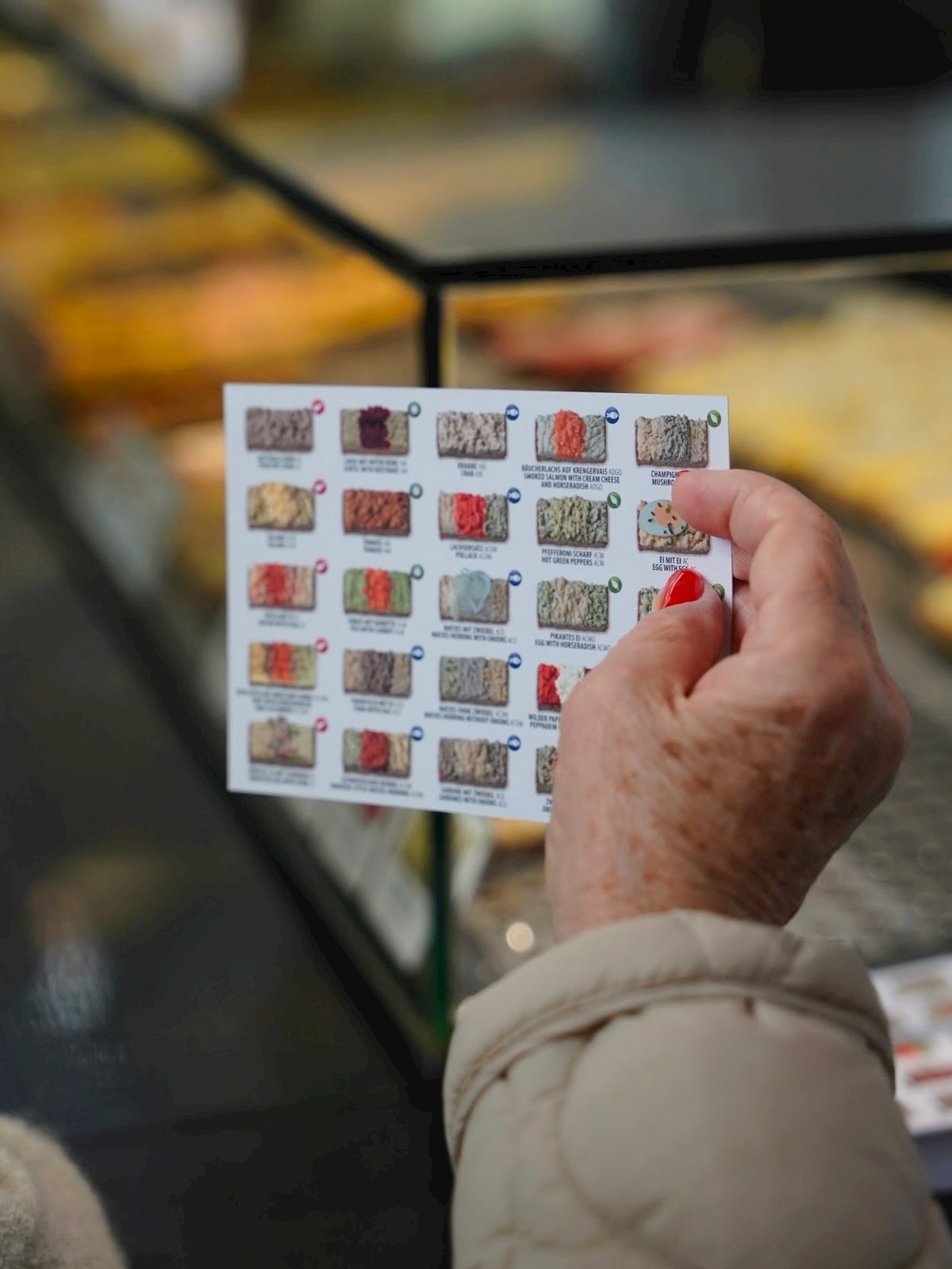
The sandwiches are nice, they are all too sweet, and as often in Vienna - you realize that they are so good precisely because they are so sugared, and they are sugared for sure. That's how the human body works, and you have to come to terms with that. We love fat and sugar. But as young generations pay more and more attention to nutrition, maybe Trześniewski will have to put Stevia in their sandwiches if they want to live another 120 years. Also, we need to stop global warming for that.
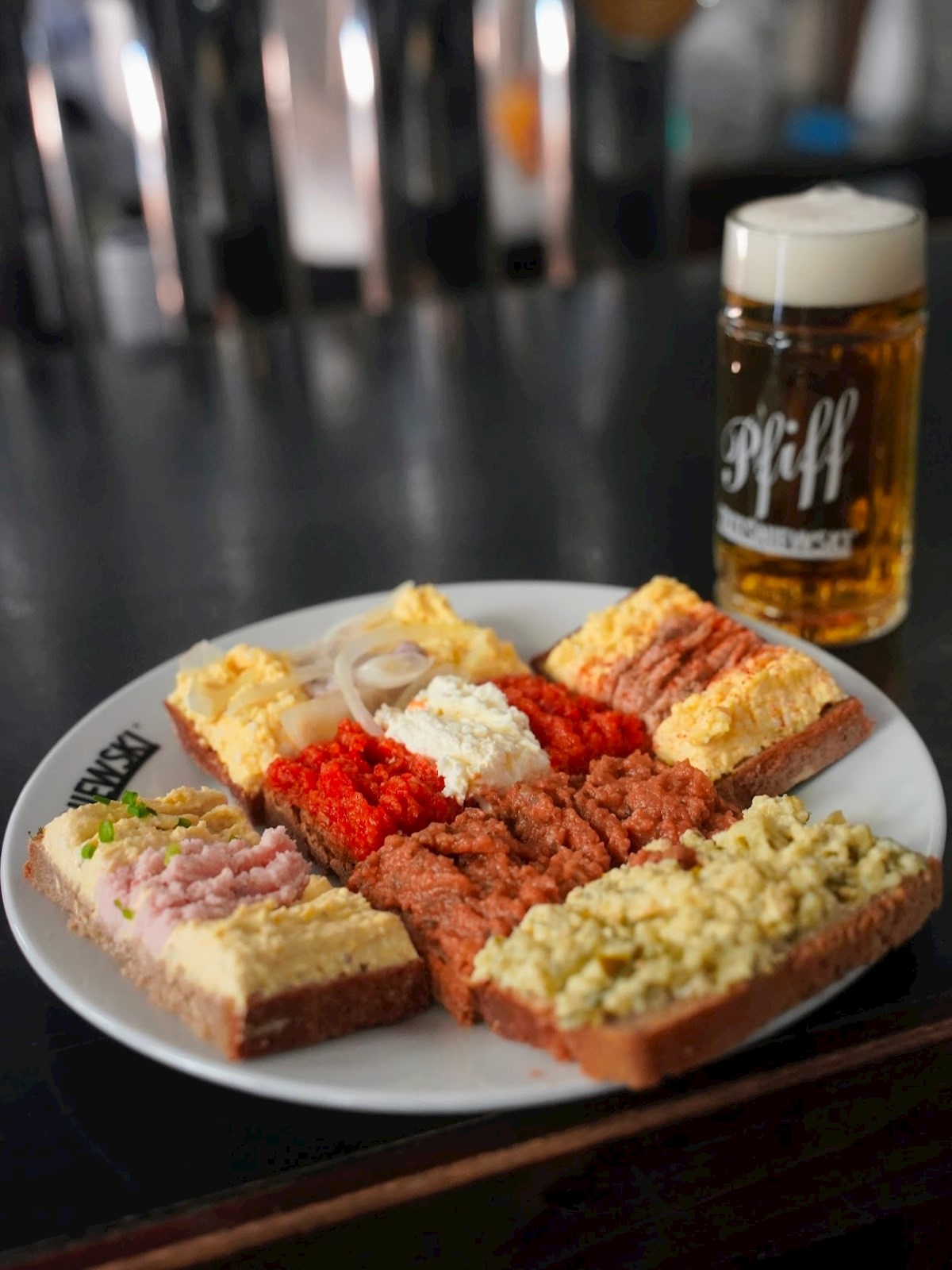
Along with small sandwiches, order a beer of micro size and macro charm, shout "Es lebe Wien, Es lebe Trześniewski!", and let's move on.
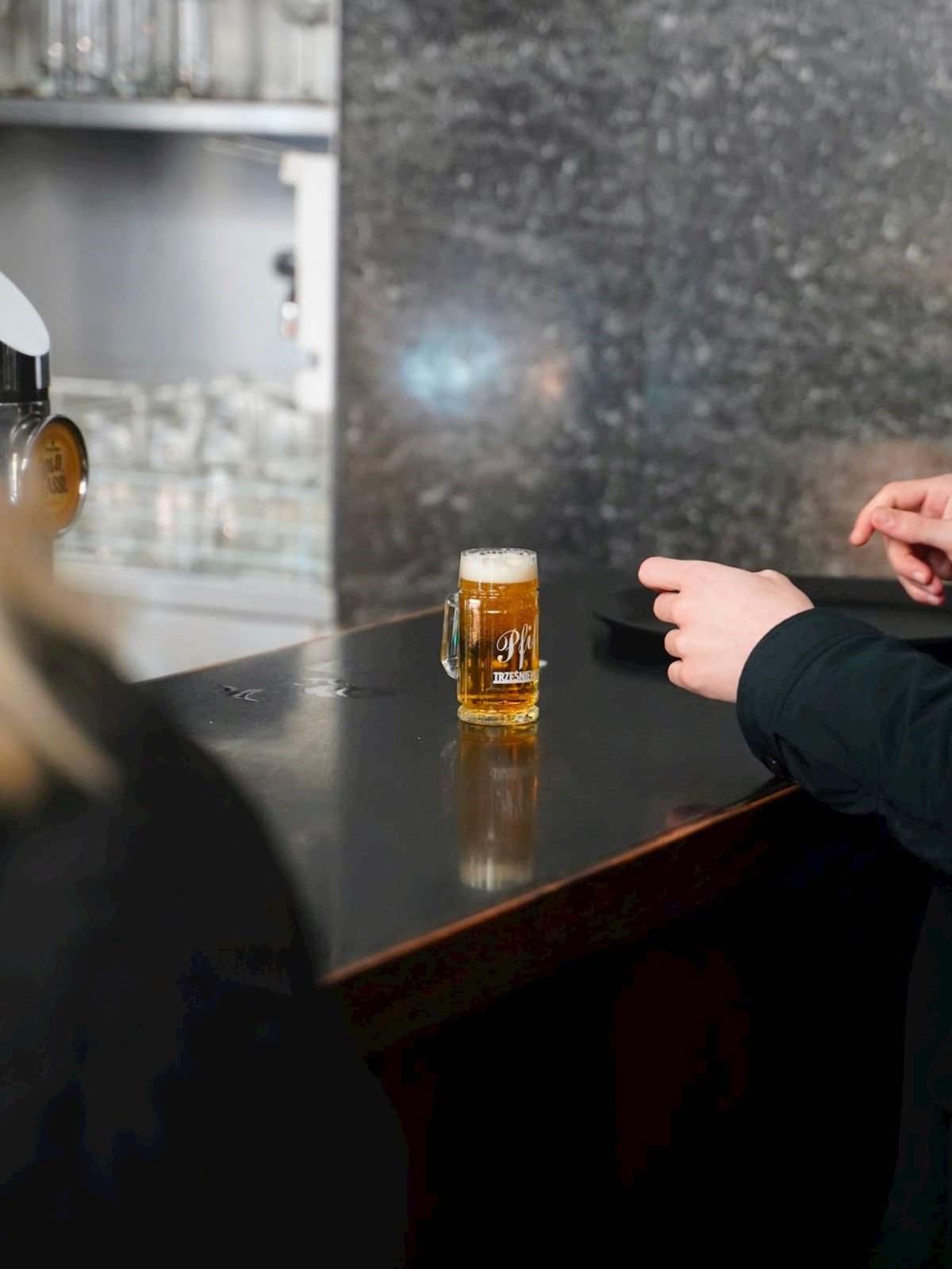
SCHNITZELWIRT
So that the title of this blog should not be a complete lie, we went to Schnitzelwirt.
Schnitzelwirt has over 7 thousand ratings on Google and an average of 4.5, which is a very nice average for over 7 thousand ratings. Google can send a person to terrible places; sometimes I wonder if people who evaluate food know anything about food or life, mostly they don't, but more often than not, Google is very useful. Mostly as a search engine.
Schnitzelwirt is another Viennese iconic place, and an iconic place means long lines, but you can avoid that by making a reservation.
They only offer pork schnitzels they call Wiener Schnitzels even though we all know they're not Wiener Schnitzels, and if Vienna ever implements a Wienerschnitzel morality police, this will be the first place they shut down.
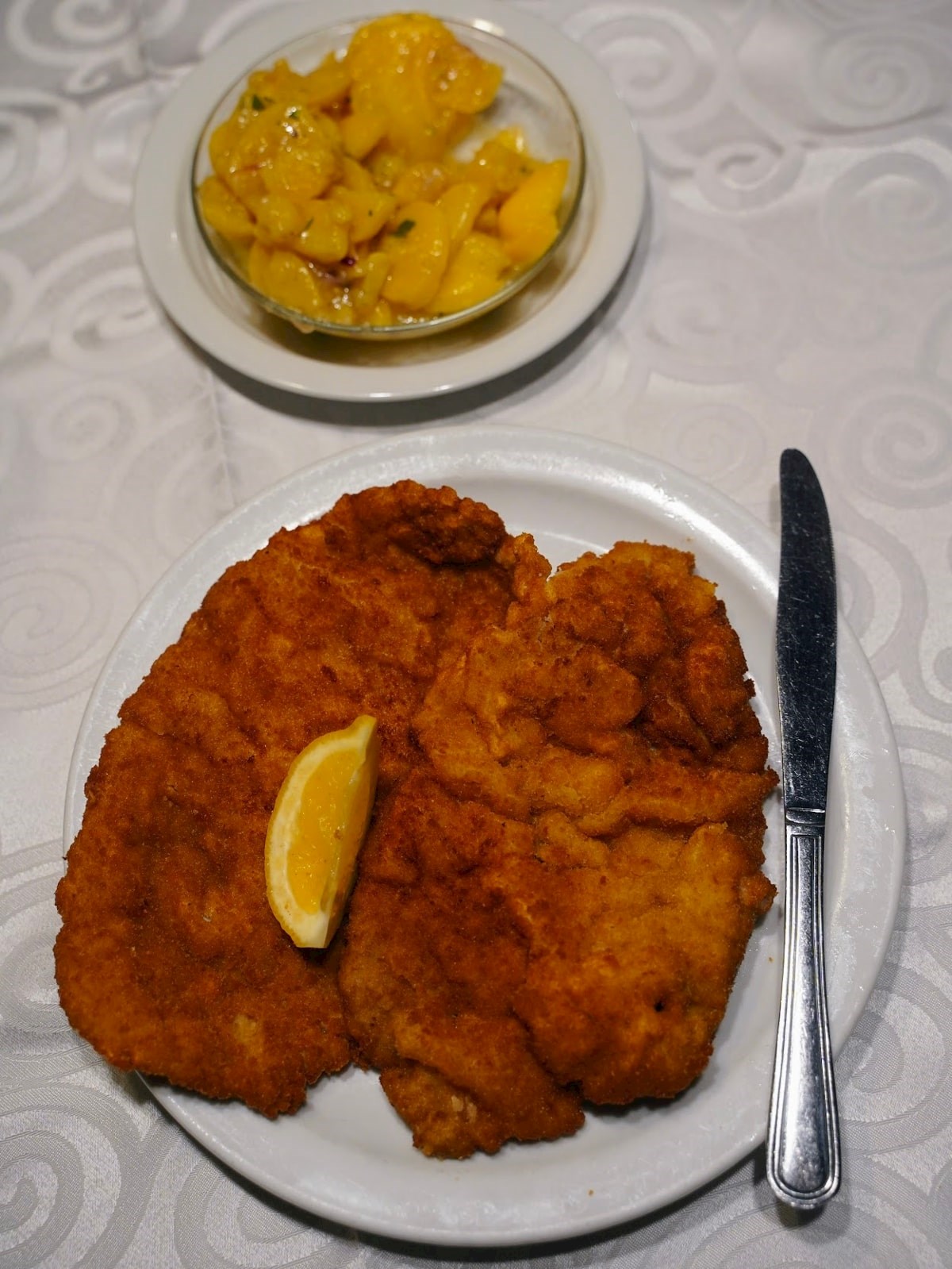
It's not the best schnitzel in the world, and it's certainly not the worst either. It is a very reliable and very solid pork schnitzel, very large at that, maybe a little too fatty in the coating, and you can feel that it was swimming in a ton of oil. But as we said, it is our primordial passion for oil; our body demands it.
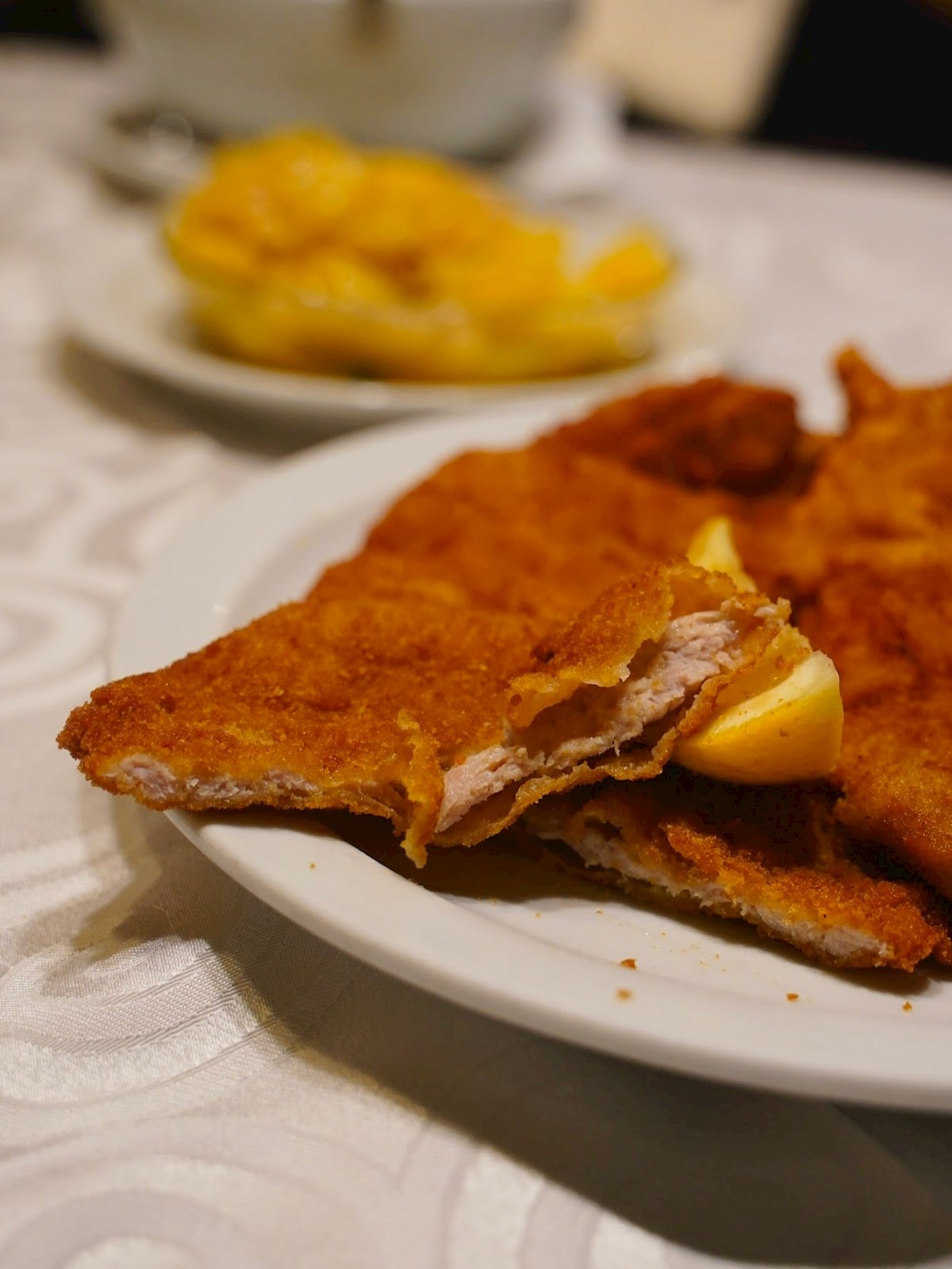
But the main thing about Wirtschnitzel's "Wiener Schnitzel" is the price. It costs 10 euros, which sounds like they don't really make money on it, although I guess they do. While most other schnitzels, even pork ones, go from 15 to over 20 euros, it's clear why Schnitzelwirt is a hit among tourists, students, those who don't have money, and those who don't like to spend too much money on food but still like to leave reviews on Google.
We also tried the goulash here, but it was nowhere near the one from yesterday. Now we have very high criteria, sorry.

Bring cash here, too, because... Vienna.
WIENER SCHNITZEL: 4/5
VALUE FOR MONEY: 4.5/5
DAY FOUR: PEPI & STASTA
PEPI
For breakfast, we had to try the iconic Pepi. Leberkas-Pepi exists for over a hundred years and is a Viennese institution.
At Pepi’s, you don’t eat anything else but leberkase, plain or flavored. Leber means liver, and Käse means cheese, but it’s neither.
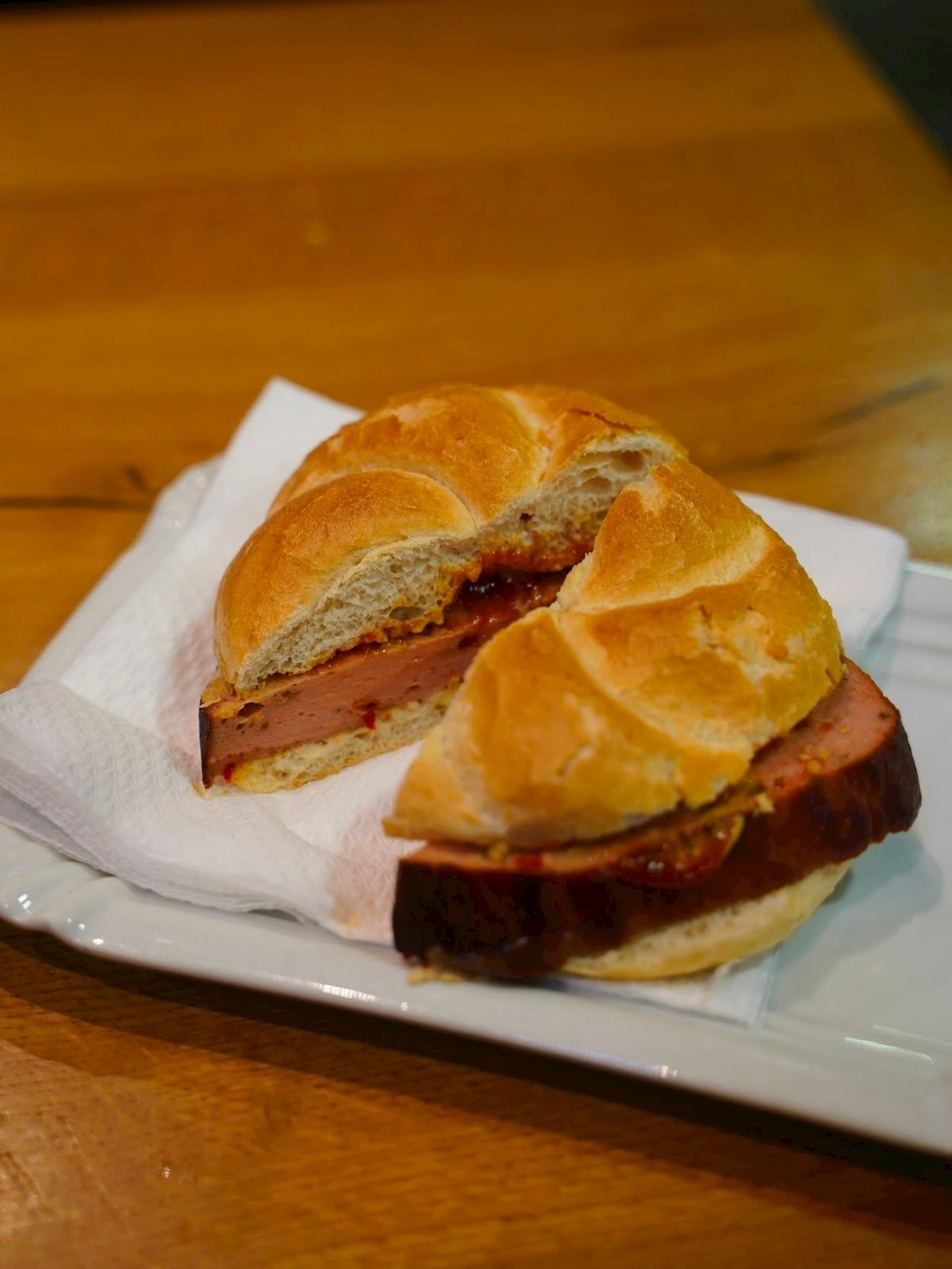
It is a traditional Austrian/German food made from mixed ground meats baked into a loaf. Leberkase, in short, is a square hot dog that you get in a Kaiser roll (Austrian crusty round bread roll) with mustard and/or ketchup. And, of course, it tastes good, but let’s not go into the nutritional details.
STASTA
Stasta is another restaurant from the top of the list of TasteAtlas recommendations. It takes at least half an hour by train from the city center and a little more on foot to get to Stasta, so it certainly does not attract tourists.
If you are a Viennese weekend tourist, it is a tragedy that you will have to miss all the beautiful parts of Vienna. Beautiful Dobling and its hidden Grinzing are my favorites, but Liesing, where the Stasta hotel-restaurant is located, is also one of those beautiful parts. By all means, if you have the chance, give Vienna more than one weekend and more than a walk around the strict tourist center, which according to the languages you will hear, is more the capital of Yugoslavia than Austria.
Viennese are, therefore, at the same time, in Liesing. And in Stasta.
What a pleasant place! This was worth the half-hour drive and walk. The atmosphere combines modern luxury and tradition, but the menu is almost exclusively traditional. We tried all kinds of things, but I’ll skip everything to emphasize the star this time: the Wiener Schnitzel.
Stasta makes Wiener Schnitzel the way Wiener Schnitzel should be made.

The meat is veal, well beaten, thin, but juicy. Breading is crispy and buttery but not at all greasy - because it is perfectly baked in clarified butter. It’s a perfect Wiener Schnitzel: juicy, catchy, buttery, wavy, crispy, and buttery (I know, I’m repeating adjectives, but there are only so many words to describe Wiener schnitzel.)

Potato salad is very tasty, but not too sugary. No cheap shortcuts were taken. Another detail by which you can recognize restaurants that go the extra mile with Wiener Schnitzel: even a piece of lemon is in a tiny mesh, so that the seeds do not fall out when you squeeze the lemon. And that lemon wedge looks more beautiful, more Viennese.
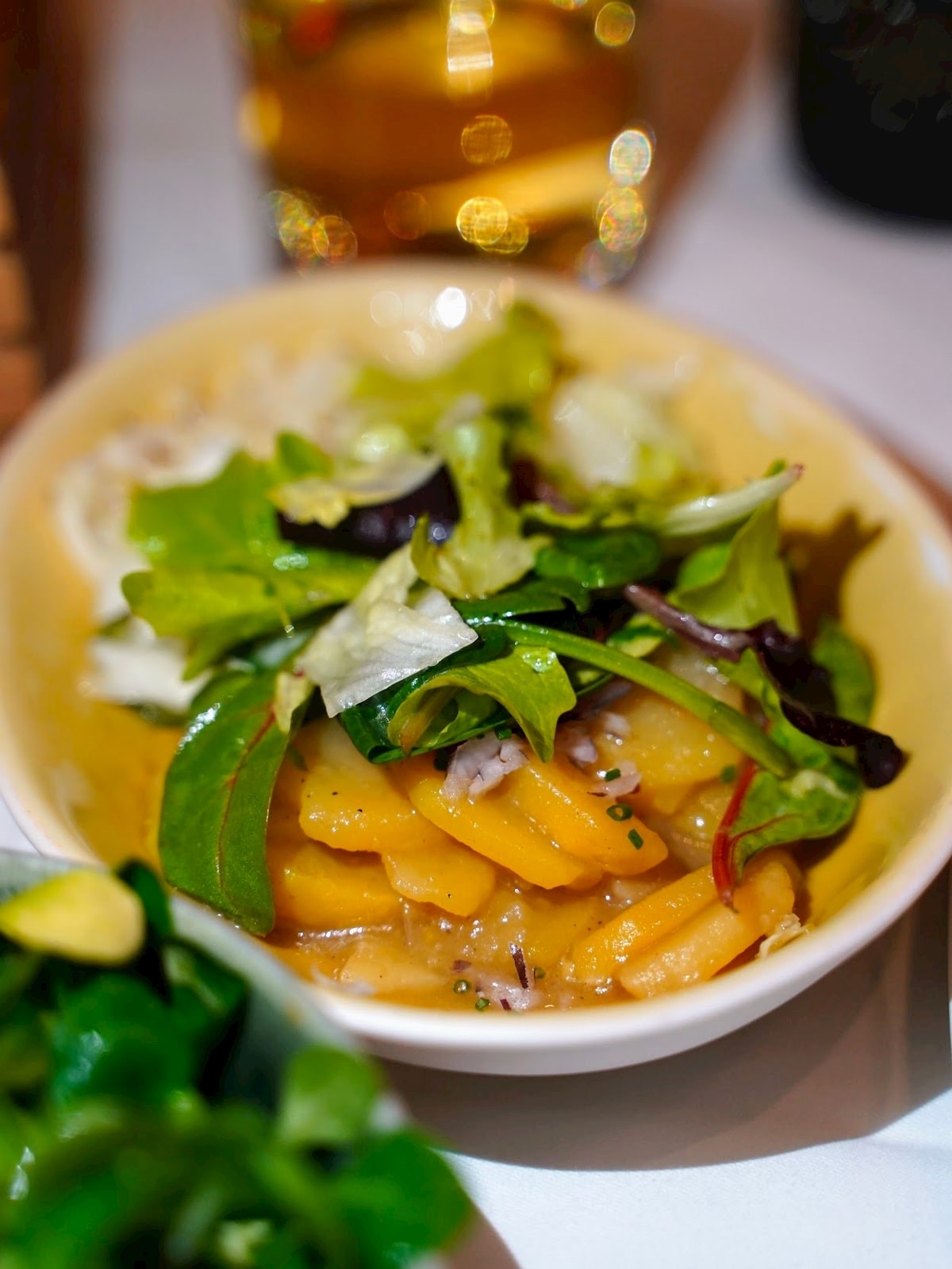
The price is not much higher than in other places with real and honest Viennese Schnitzels, 25 euros.
Wiener Schnitzel cannot be better than this one. Absolute, pure, five out of five. Stasta is my new favorite place in Vienna and the first recommendation for anyone going to Vienna.
STASTA: 5/5
WIENER SCHNITZEL: 5/5
DAY FIVE: VEGAN WIENER SCHNITZEL
VELANI
Normally, I try not to drink alcohol or eat meat for more than two days in a row, but this is Vienna, so I decided to take a break on the fifth day.
Since I’m looking for Wiener Schnitzels and Schnitzels that resemble Wiener Schnitzel, we decided on the vegan restaurant Velani, whose specialty is serving Viennese classics - but in a vegan version.
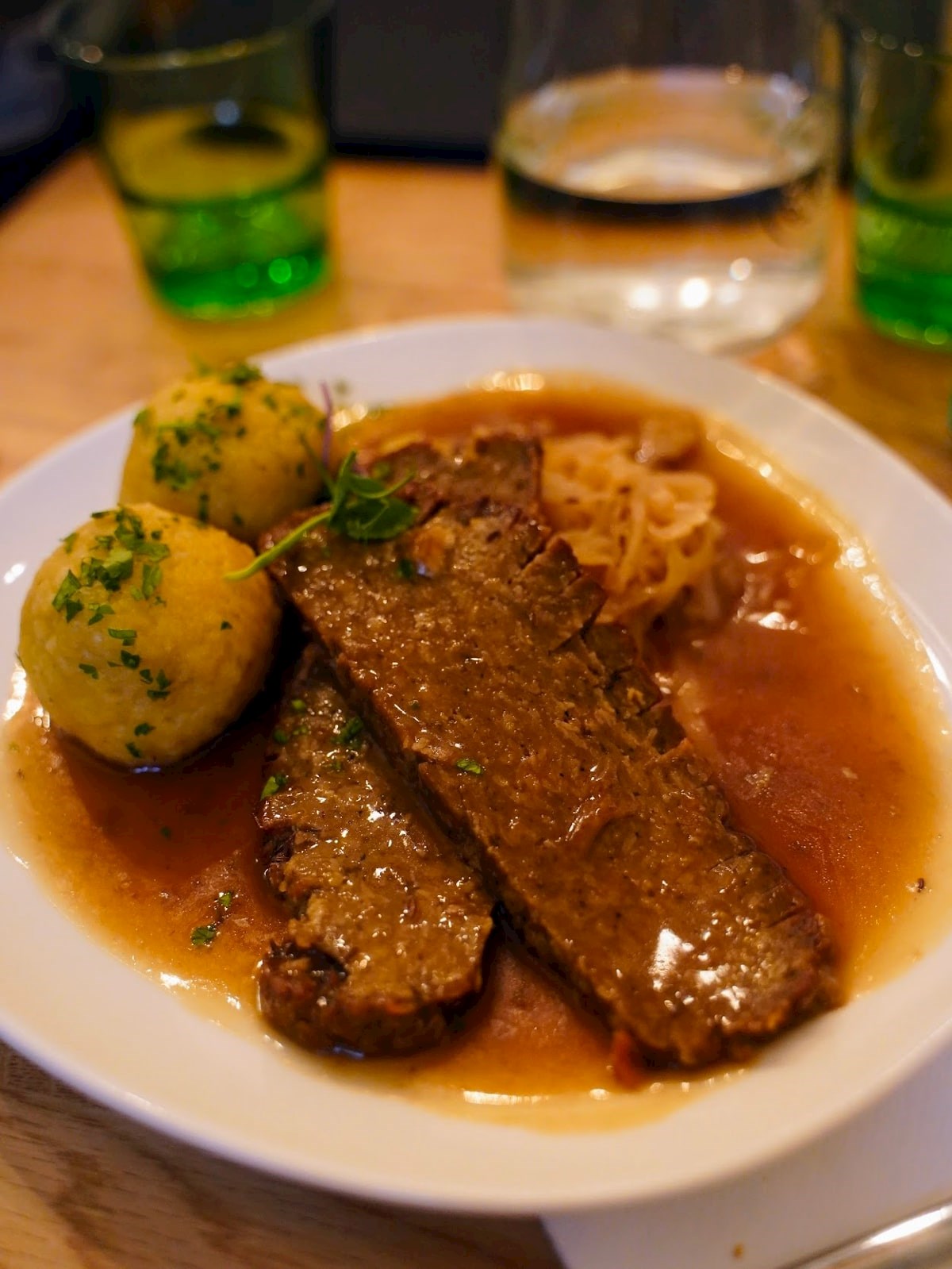
We tried three Viennese specialties in vegan versions: “Wiener Schnitzel”, “Bluntzengrostl” and “Kummelbraten”. While Wiener and Kummelbraten are too dominated by seitan, in Bluntzengrosti, beet and spices play the role of blood sausage perfectly.
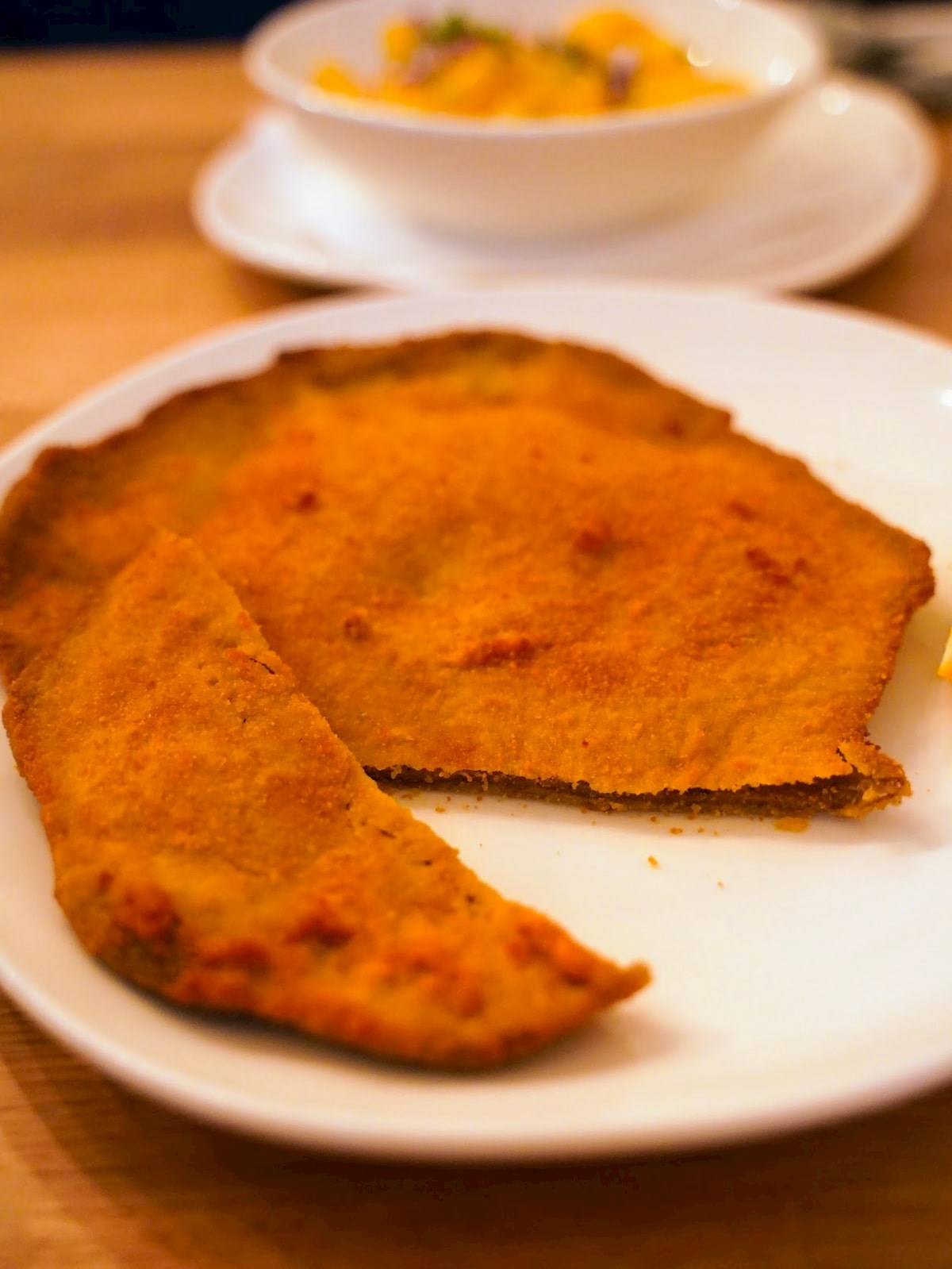
If you want to try Viennese specialties and you don’t eat meat, I believe there is no better option.
VEGAN WIENER SCHNITZEL: 3/5
ZUM SCHWARZEN KAMEEL
While we normally admire how a place has survived for 20, 50 or 100 years, all these numbers are nothing for this black camel.

This business was opened in 1619, and even Napoleon, and now Matija Babić, ate and drank here. I drank coffee and kombucha, and tried a small pink Punschkrapfen, so there’s not much to say about it... but the atmosphere is wonderful.

DAY SIX: GASTHAUS WORACZICZKY & OBERLAA
GASTHAUS WORACZICZKY
If you are looking for restaurants in Vienna that are loved by the Viennese, that are not frequented by tourists, and that are at the same time not too far from the center - Gasthaus Woracziczky is the obvious choice.
I loved the atmosphere. The list of wines currently served by the glass is written in chalk above the bar; somehow, that always makes the wines better. And I think Gruner Veltliner is my favorite wine in the world, at least today... at least after a third glass.
We ate a couple of Viennese must-try dishes, which we don't eat that often: ham with horseradish for an appetizer, then lentils with dumplings and backhendl.
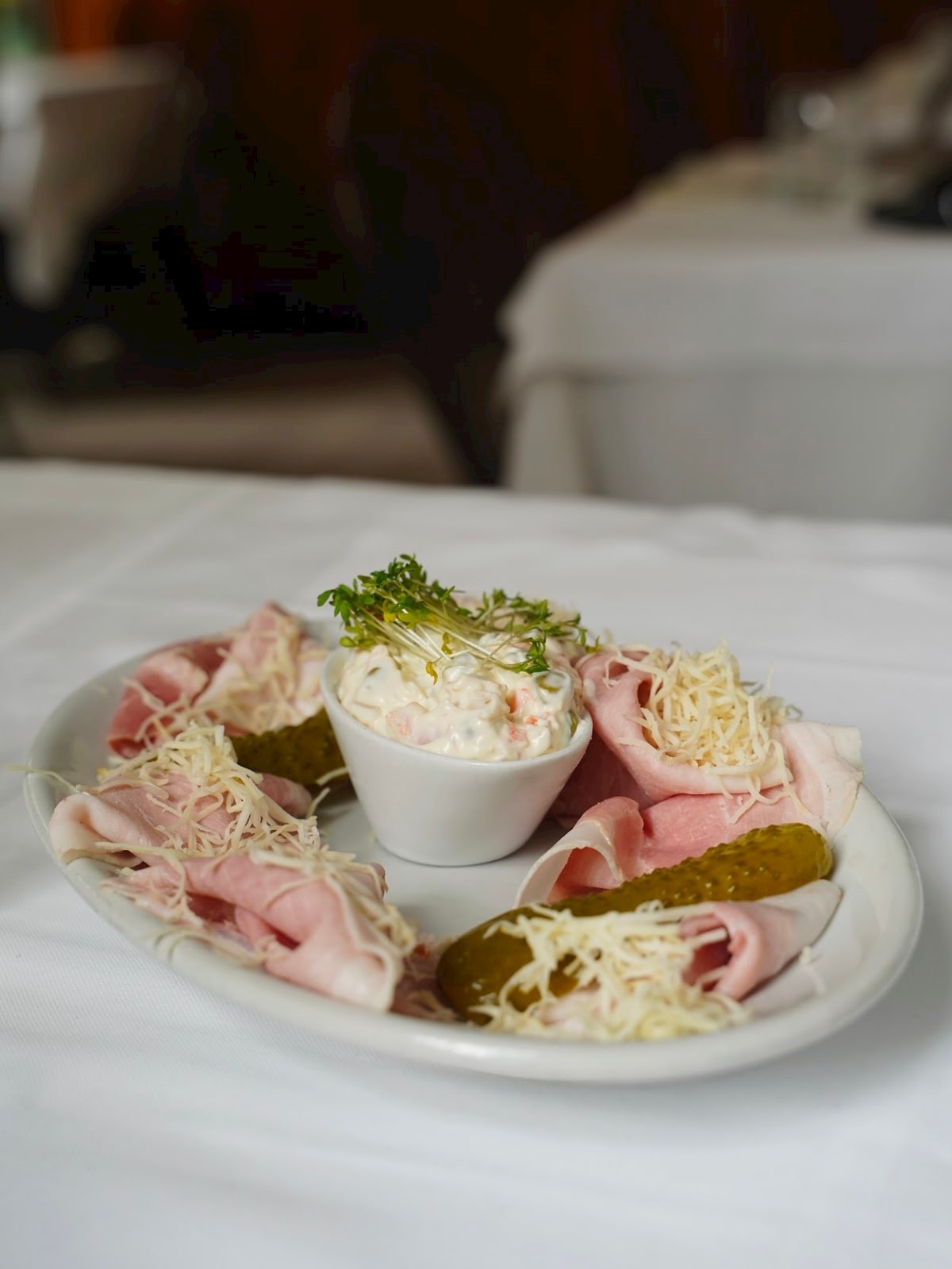
Viennese take on lentils is very bland and average, and I'm not sure why Viennese people love it so much. You are the king of dumplings; let the Indians have lentils.

Backhendl (crispy fried pieces of chicken) was the winner of this lunch, and pieces of chicken liver are also a nice, albeit bold, touch on the plate. The dessert, some kind of whipped cream with poppy seeds and pomegranate, was great.
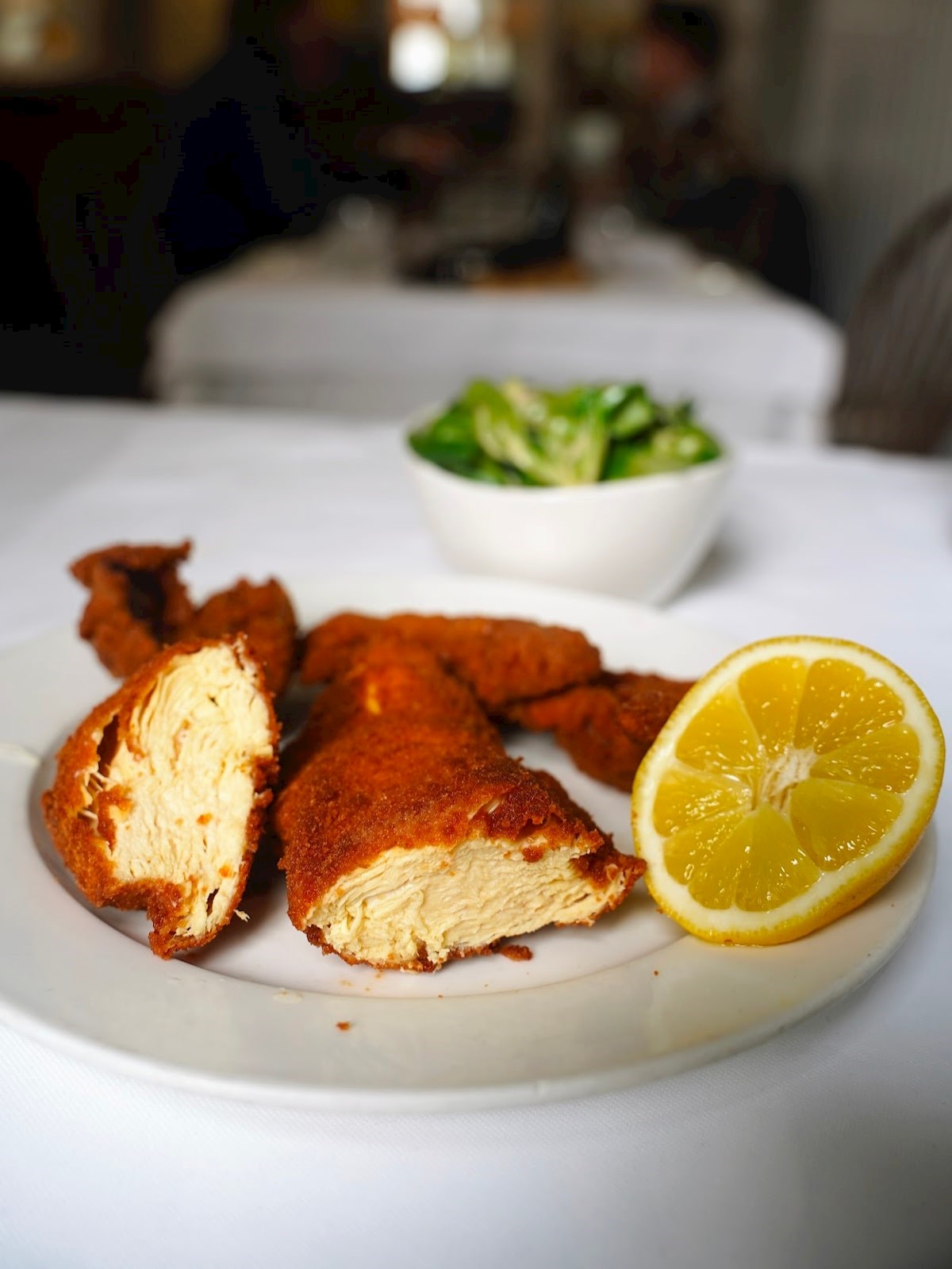
Unfortunately, we have not enriched our top list of Wiener Schnitzels, because it turns out that they do not offer it here.
I expected small miracles from Woracziczky. I got a decent traditional restaurant.
OBERLAA
We won't have dinner today, but we will give Oberlaa Konditorei a chance for one more dessert. Or two more desserts.
Oberlaa is a little less famous than Demel, Aida, or Sacher because it is a very young player in the competitive market of Viennese cake manufacturers. It was founded in 1974, which is a baby in Viennese terms. And in Vienna, few currencies are more valuable than tradition.
Still, Oberlaa is regularly full. Not so full that you have to wait in line for half an hour like in front of Demmel, but full. We came here for Punschkrapfen, which TasteAtlas recommends right here as the best in the world. And it is really tasty and better than elsewhere.
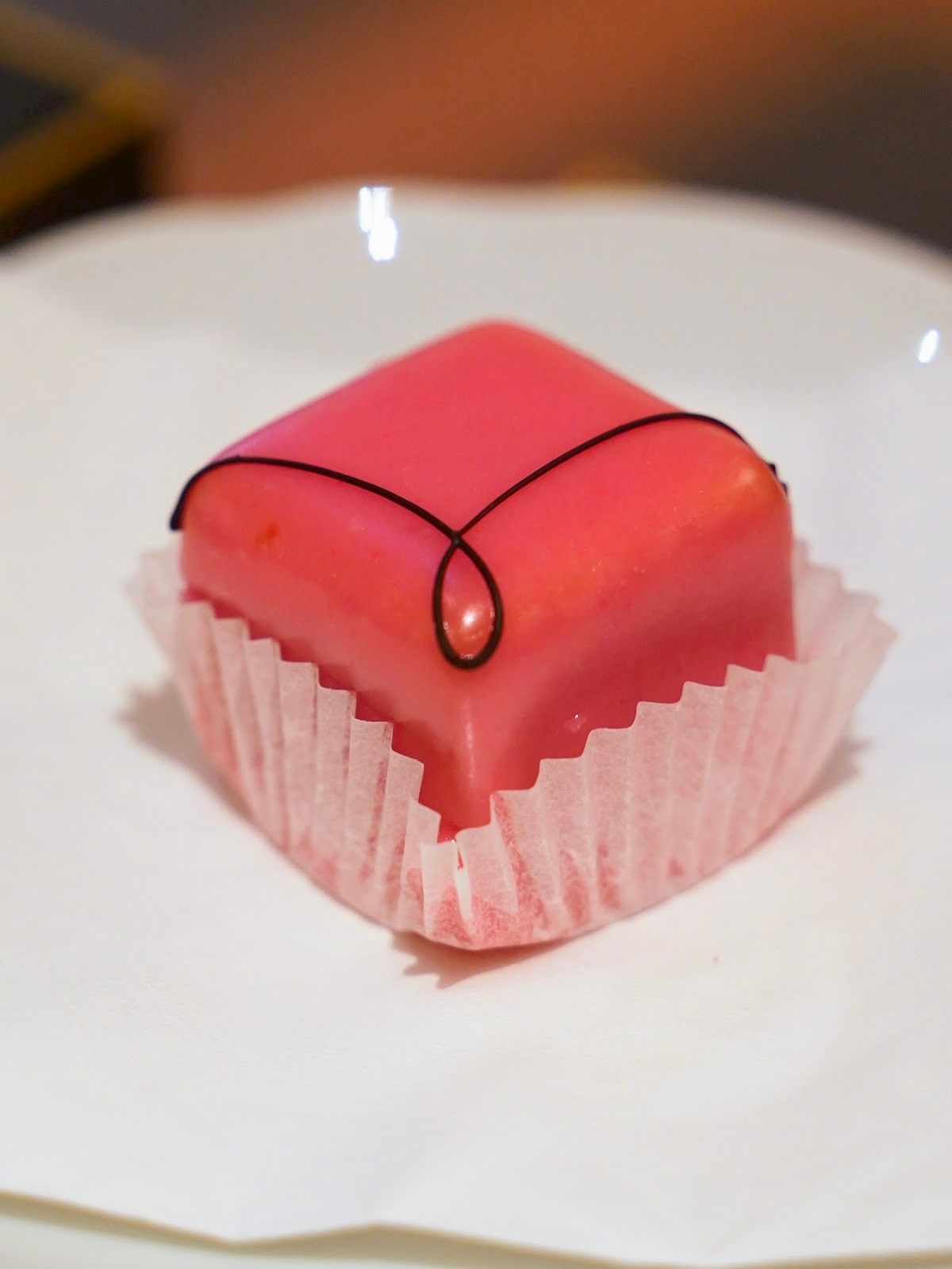
But if we came in for the Punschkrapfen, we'll be back for the Topfenknodel. What a wonderful sweet, light, fluffy dessert-gnudi, served with rich chunky fruit jam with pieces of half a plum, or whatever is in the season when you come.
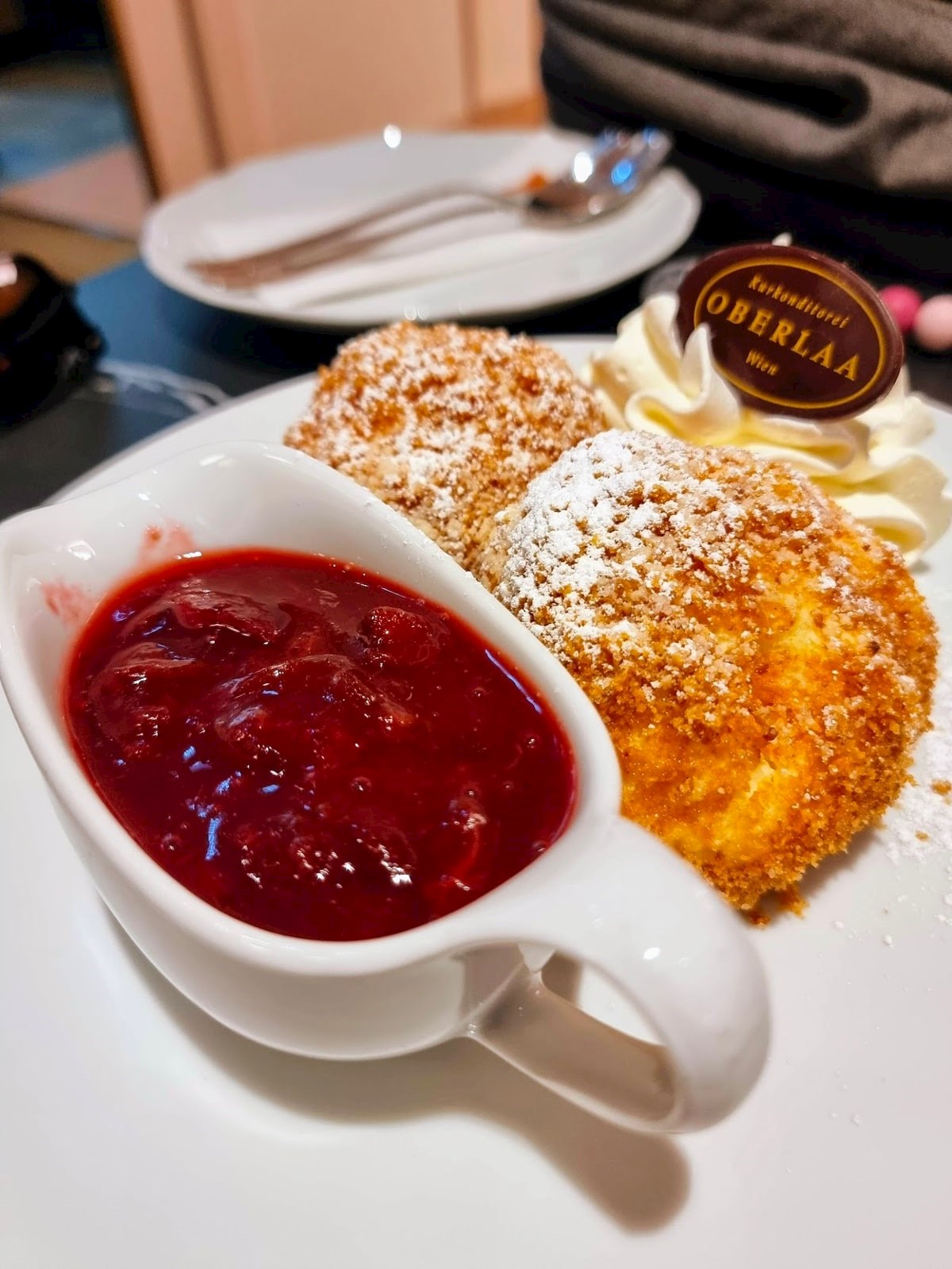
Oberlaa is a wonderful place, although the impression was spoiled by the water that they charged 3.6 euros, which is not a practice in Vienna. Tap water is usually brought by default, which is as good or better than bottled water. Austria is one of those countries where bottled water is a tax on fools and snobs; I was a fool for not asking when they offered water if they plan to trick me with the bottle, but they usually just don't do that in Vienna.
DAY SEVEN: RESTAURANT ECKEL
For Eckel, we traveled twenty minutes from the center to the Dobling district. Beautiful, old, green neighborhood, dotted with beautiful old Viennese houses and villas. In one of them is Eckel, a very respectable restaurant where rich old Viennese families from the wealthy old district of Dobling gather.
Eckel is a fancy restaurant with Viennese classics at haute cuisine prices. If you didn’t realize the price range from the restaurant exterior or the demeanor of the waiters, you will understand it when you see that sekt (Austrian sparkling wine), which costs 4-5 euros elsewhere, is charged 9 euros here. The interior of the villa itself is not particularly different from other classical Viennese restaurants.
Eckel is basically a restaurant that offers food plebs love for non-plebs who want to feel like they’re not with the plebs, and it comes with a price that will keep the plebs away.
Tafelspitz is correct, but not for that money. The potato salad is correct, but not for that money. The Viennese schnitzel here is decent, but not for that money.
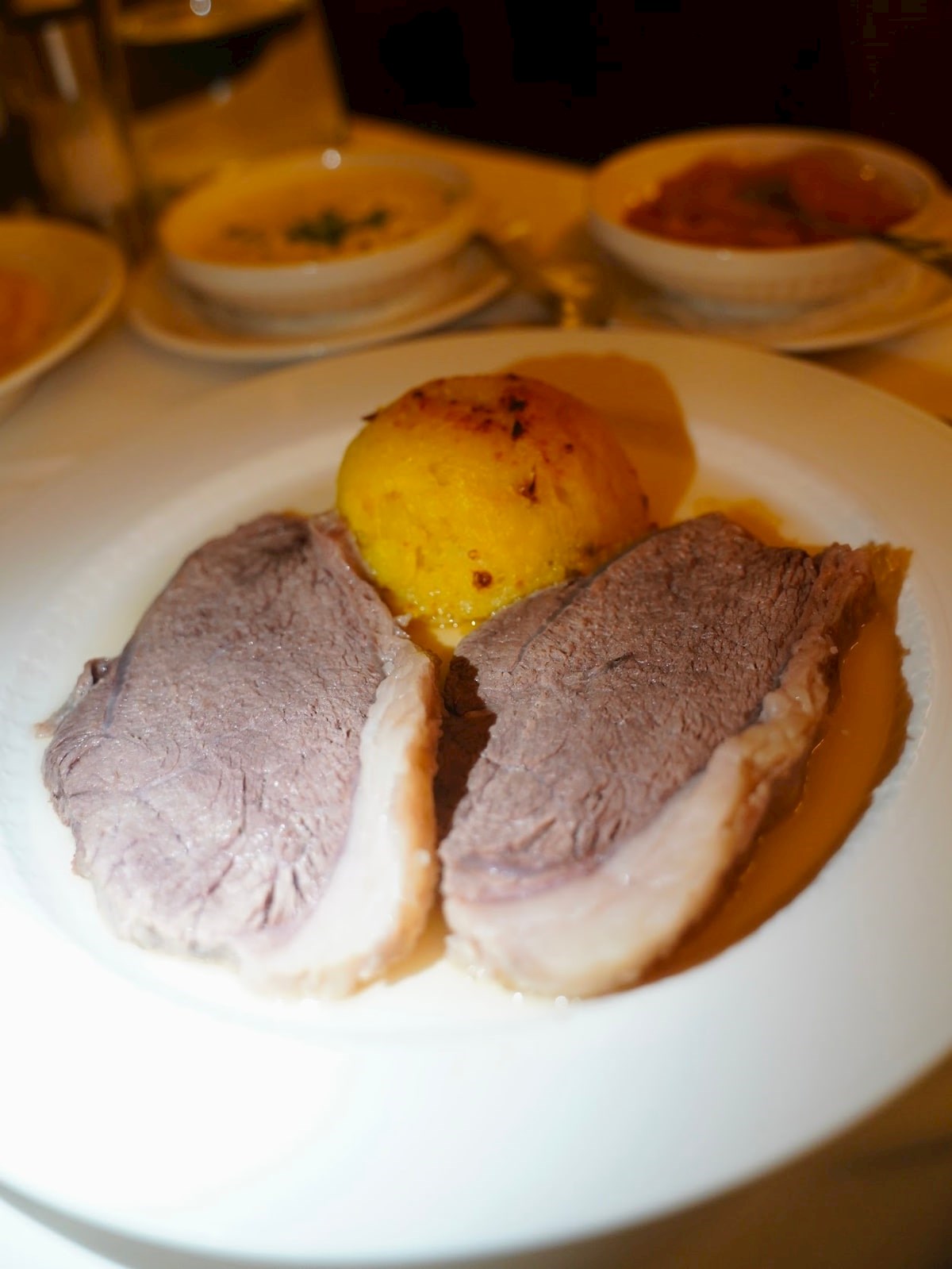
Tafelspitz is ok, juicy, but the experience is nowhere near as rich as in Plachutta. The Viennese schnitzel is too thick, the meat is not beaten enough, and it is tough in places. Breading is good.

And for that money, I want more than that. And a lemon in a mesh.
It is possible that I am missing some charm or taste that only old rich Viennese see. For me, this is clean 3/5 for the price one would expect 5/5 food.
ECKEL'S WIENER SCHNITZEL: 3/5
DAY EIGHT: THUM & VULCANOTHEK & STUWAR
Austrians love their pigs. Instead of a real lunch, we tried ham at two places. Thum for traditional Austrian schinken (ham), and Vulcanothek for not-so-traditional Austrian prosciutto. Both places are located in the very center and are a few hundred meters far from each other, ideal for a ham walking tour.
THUM
Thum is a famous schinken producer, and, judging by the reviews, adored by Austrians. Even though I really wanted to like Thum, and I love ham, their ham is just too watery for me. Excessive wateriness in ham does not mean juiciness, but shortcuts taken in production that manifest in a lack of flavor intensity. Austrians, if I’m wrong - and I’m often wrong, please correct me.

The wine was very good, though. Wiener Gemischte Satz - a great suggestion by the gentleman behind the counter, is the most Viennese of all wines.
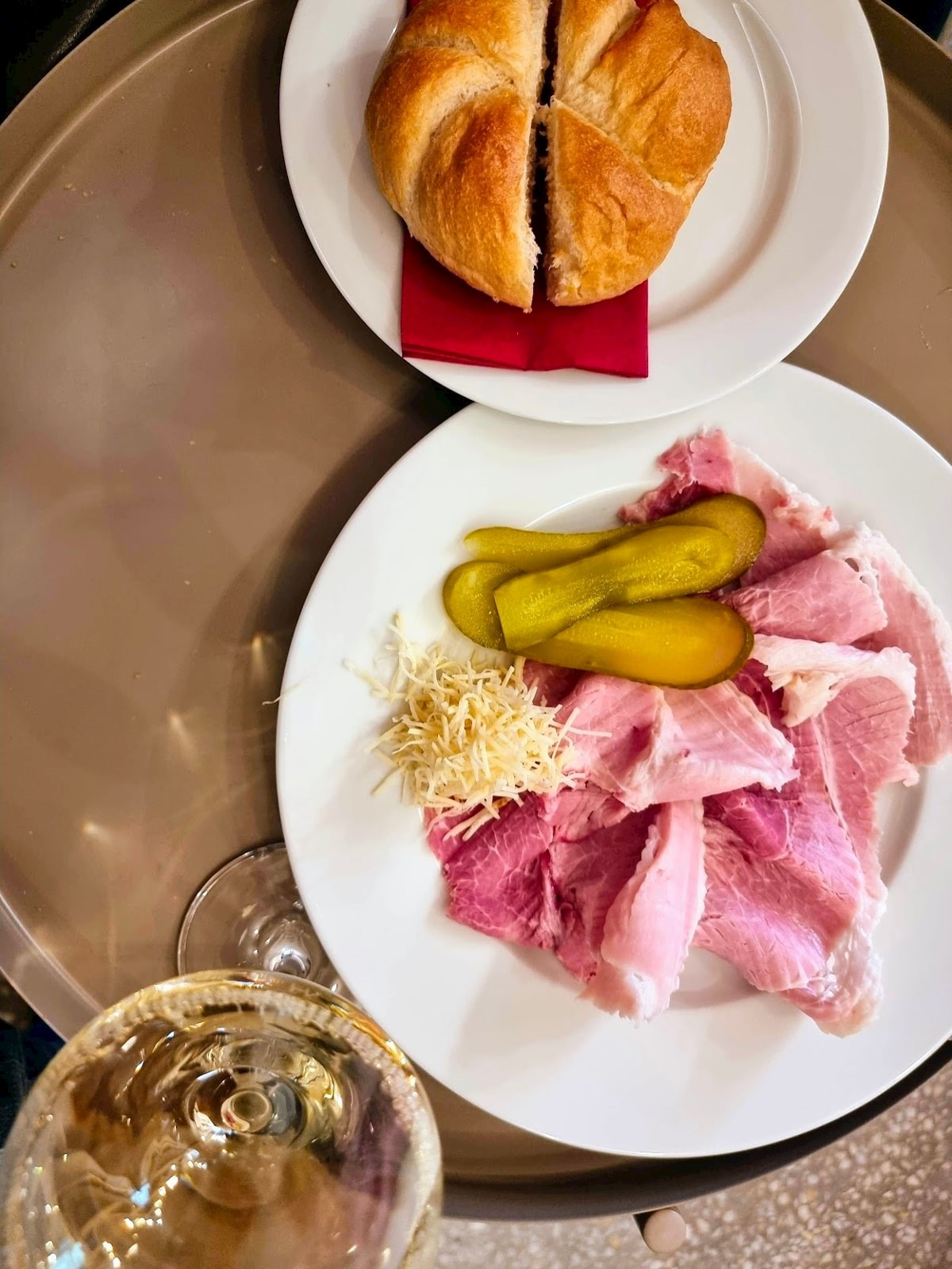
“It applies to multi-variety blends in the Vienna region. The regulations are very particular. At least three white varieties must be planted in any vineyard that supplies the wine. The different varieties must be harvested and pressed together.” - Wine Searcher teaches us.
VULCANOTHEK
Vulcanothek offers prosciutto of Italian style and Italian prosciutto quality. Which is to say: good, but nowhere near pata negra.

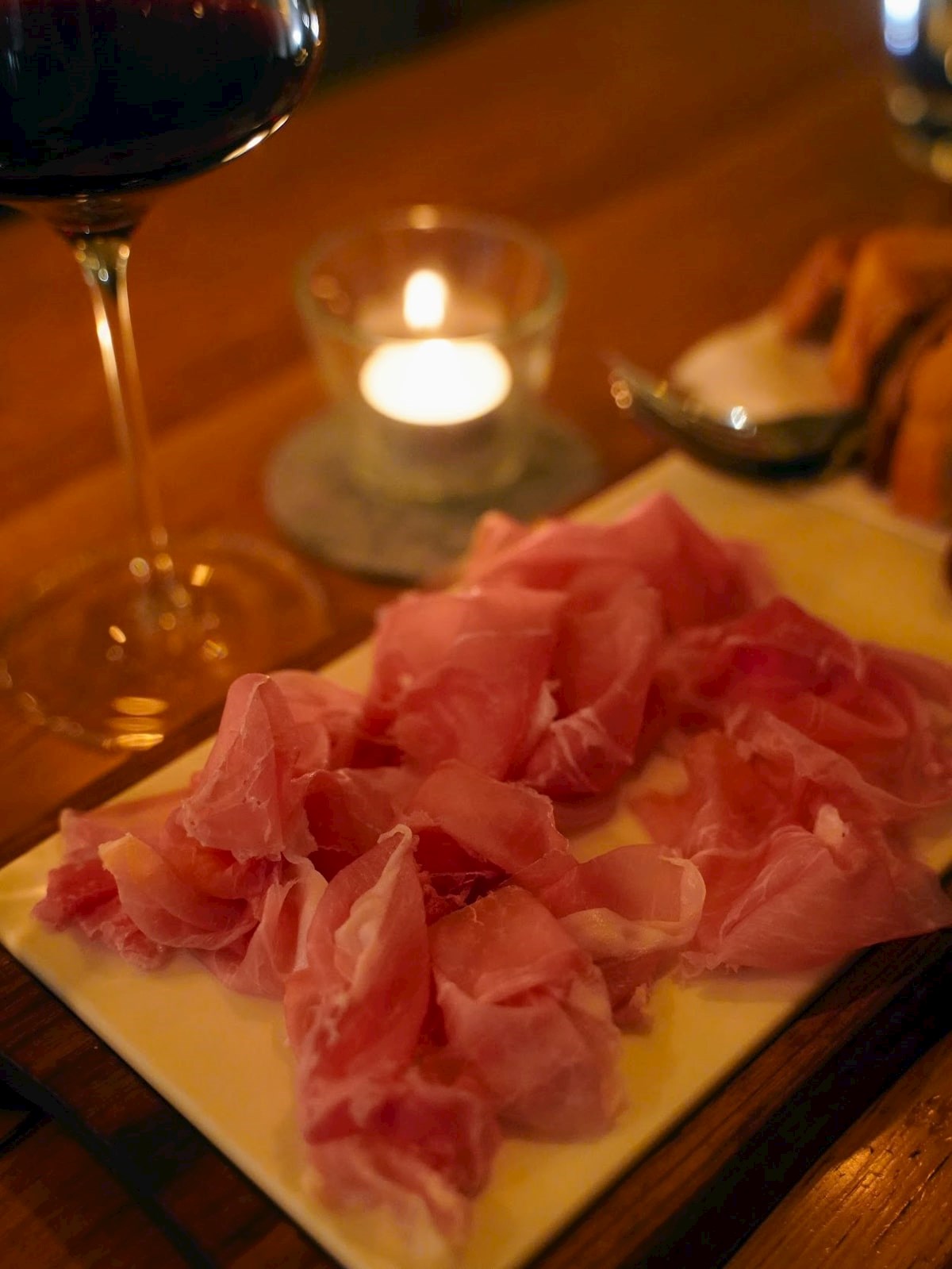
But they recommended a red wine blend that can only be bought in Vulcanothek, and it’s crazy how good it was.
STUWER
Even more than their pigs, Austrians love their tradition. Stuwer already has “neue Beisl” in its name (where Beisl stands for Viennese taverns that serve traditional food), and it was the only new beisl we decided to visit on this trip due to numerous recommendations from locals.
It started perfectly, with the beer “Zaungast - Honig Lavandel Weizen”. Uh, what is this!? I can’t remember when I drank a better beer than this, maybe Vietnamese Pasteur’s barrel-aged imperial stout a few years ago. If I understood correctly, we are talking about the beer champion of Austria and one of the winners of the beer World Cup. If it isn’t a champion yet, it should be.
Then came the food. Langos is langos, always nice, always unhealthy. Fatty deep-fried dough is something the human body is always looking for, and the intense Austrian Bergkase is a good addition to everything, including that greasy dough.

Next came the Wiener Schnitzel, which they proudly point out is made from Austrian veal. It sounds promising, but the meat was a little tough and a bit chewy, the breading crispy but quite oily.

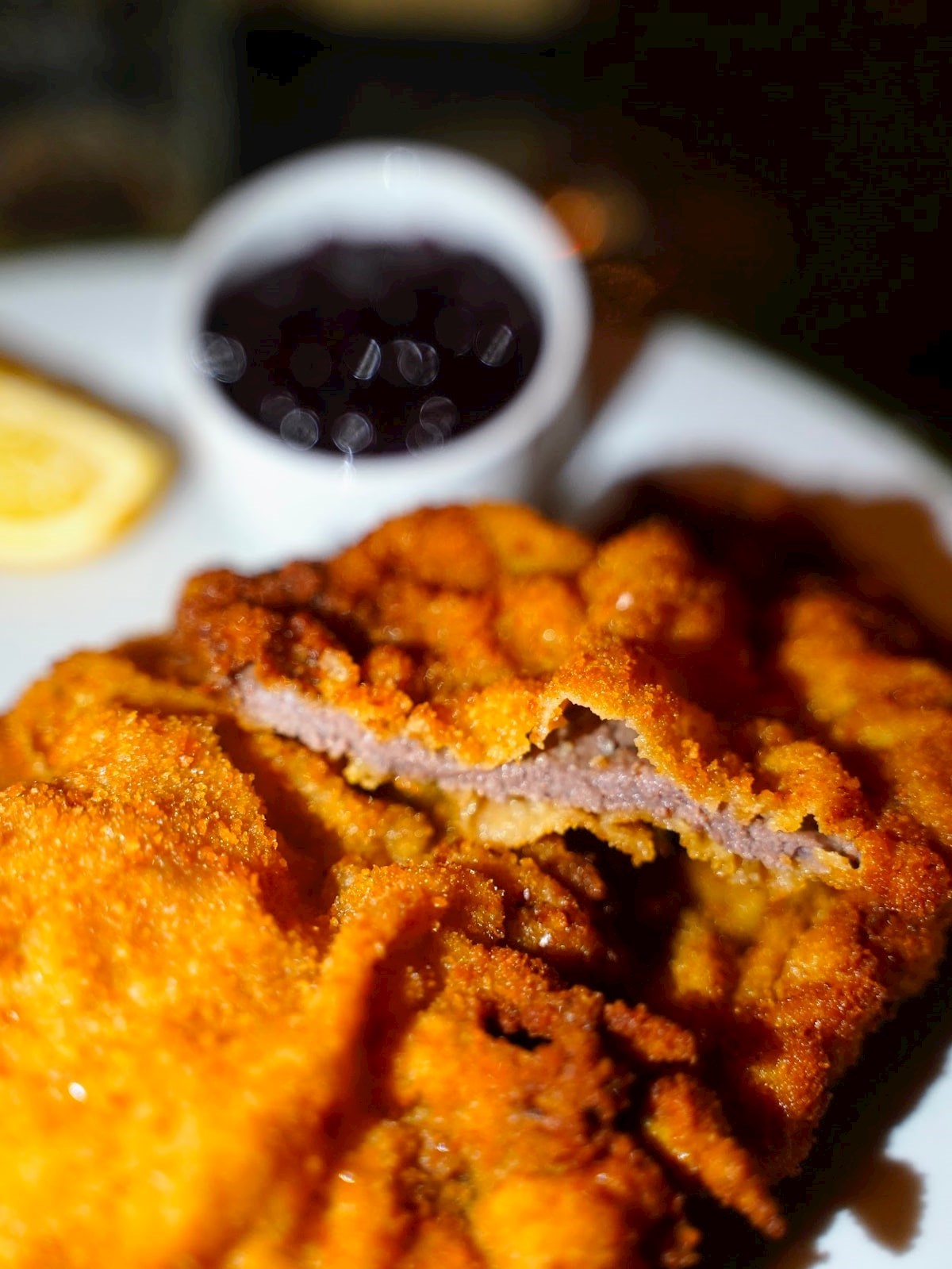
I sound too critical; sorry for that! With the whole pleasant atmosphere of Stuwer, with a very good twist on the Austrian classic - duck with potatoes (I strongly dislike ruining classics with twists, but I have to admit that this was tasty) and very catchy kaiserschmarrn (fluffy shredded pancakes), the final impression was just fine.

STUWAR’S WIENER SCHNITZEL: 3.5/5
DAY NINE: LANDTMANN & GRINZING & 575 SAGMEISTER
CAFÉ LANDTMANN
Landtmann was a place we were really looking forward to. It hardly gets more iconic in Vienna than Landtmann, a super-charming central Viennese institution founded in 1873.
First tip: avoid a covered terrace. You will find such terraces in Pristina, Kosovo as well. Ugly-modernistic and inappropriate from the outside as well as unsightly from the inside, but I guess the restaurant just had to get some extra square meters. ¯\_(ツ)_/¯
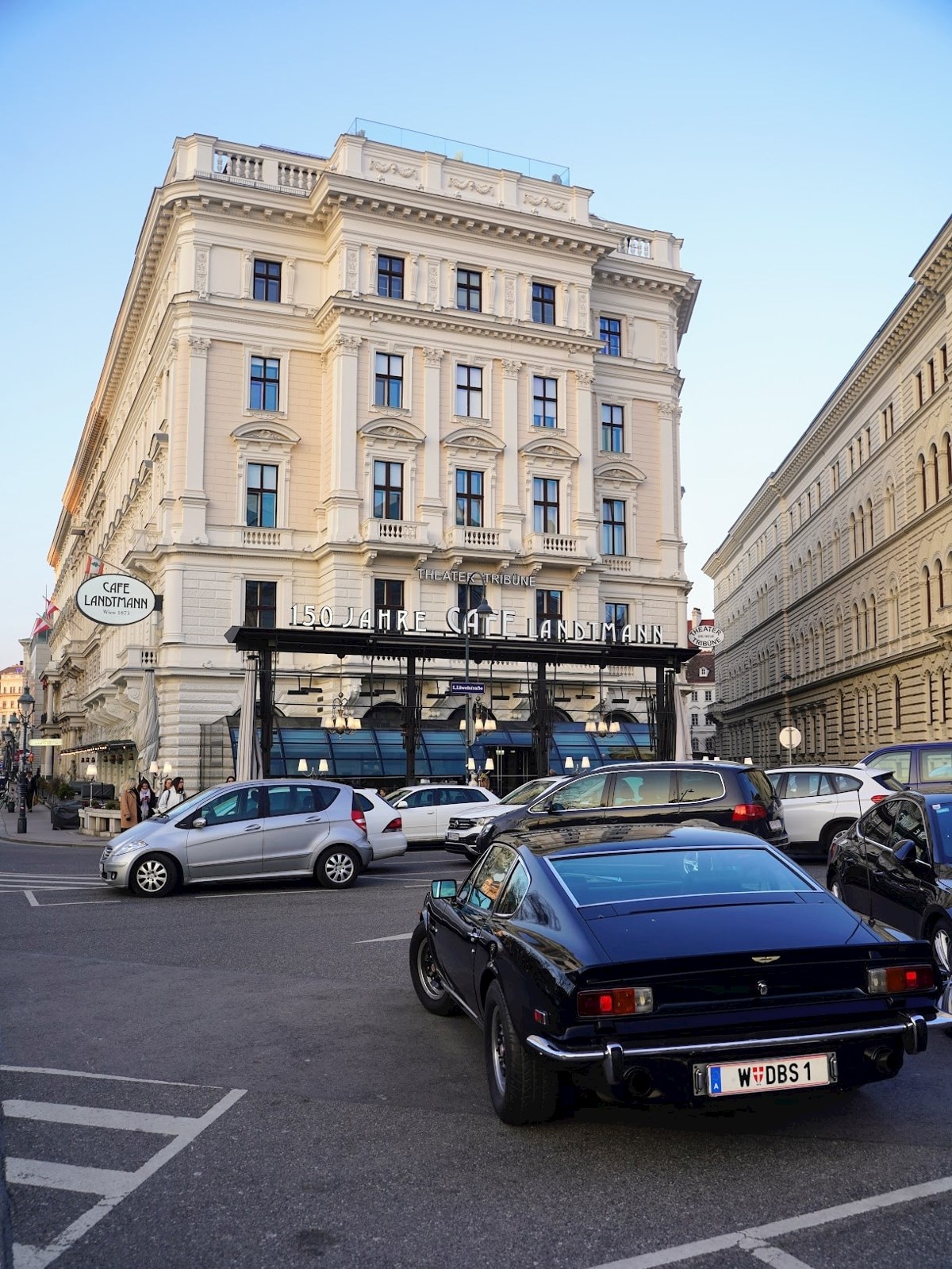
If you manage to get a table inside, you have a better chance of experiencing that “true” Landtmann we’ve been hoping for.
Now you should hope that they won’t immediately tell you “you have a table for an hour and a half”, as they told us. Although we certainly wouldn’t stay longer, we hoped to experience the noble and iconic restaurant atmosphere, not a brothel timer-on atmosphere.
Now you need to avoid goulash. Goulash is awful, no fancier word for that thing. Reheated tomato sauce thickened with flour with a couple of chunks of meat in it, with yesterday’s dumpling that was waiting for guests under the heater for at least a couple of hours. Unfortunately, those guests were us.
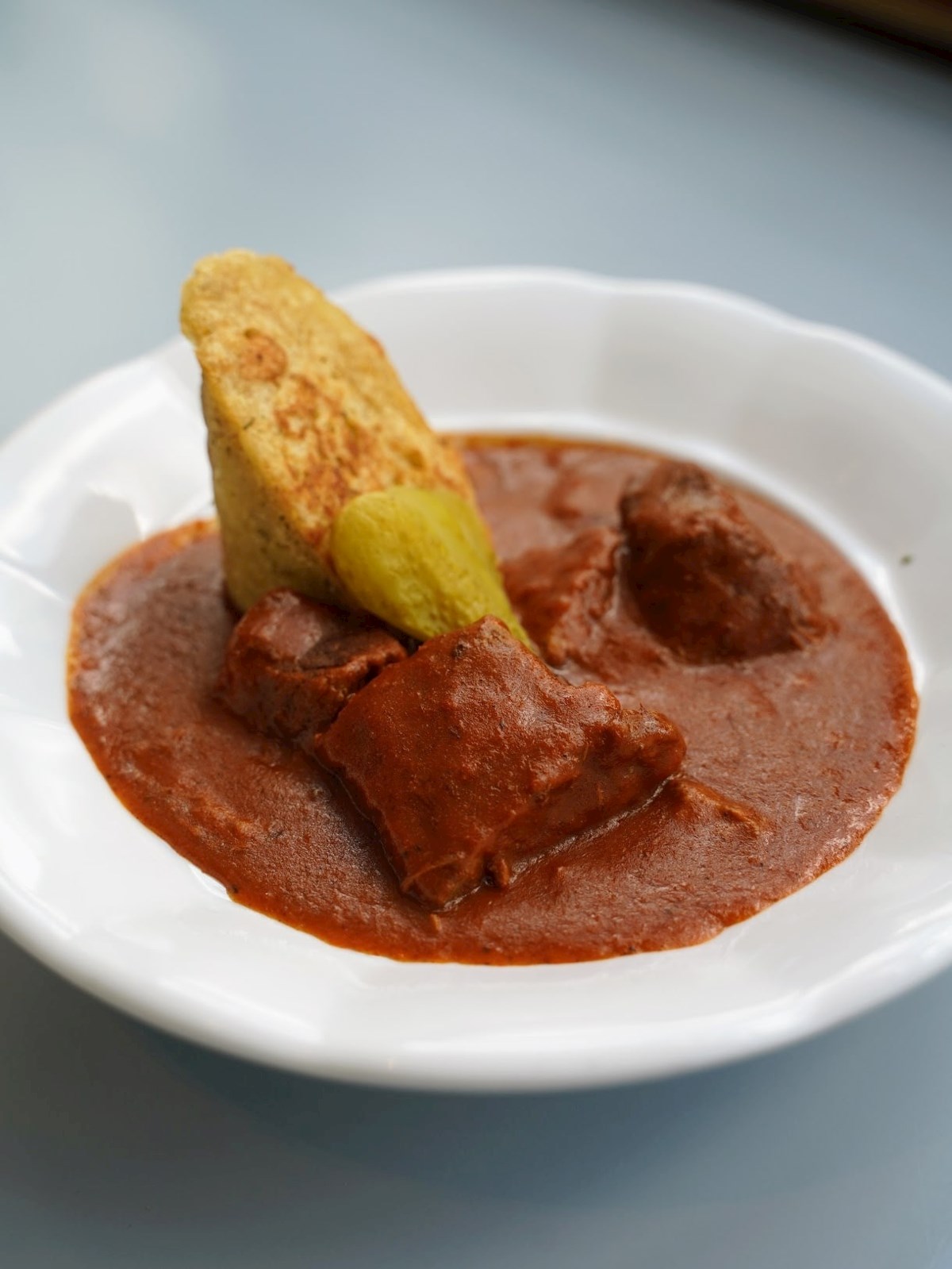
If you avoided the terrace and goulash, and are prepared to fight the Landtmann timer, do order the Viennese schnitzel and some cake, any cake. Apfelstrudel is great, as are Kardinalsnitte and Kaiserschmarrn. We didn’t try the other cakes, but I bet they are great too. As this is basically a guide about Viennese schnitzels, I give this one a 4.5/5. Although it is not fried in butter, it is a technically almost perfect Viennese schnitzel.

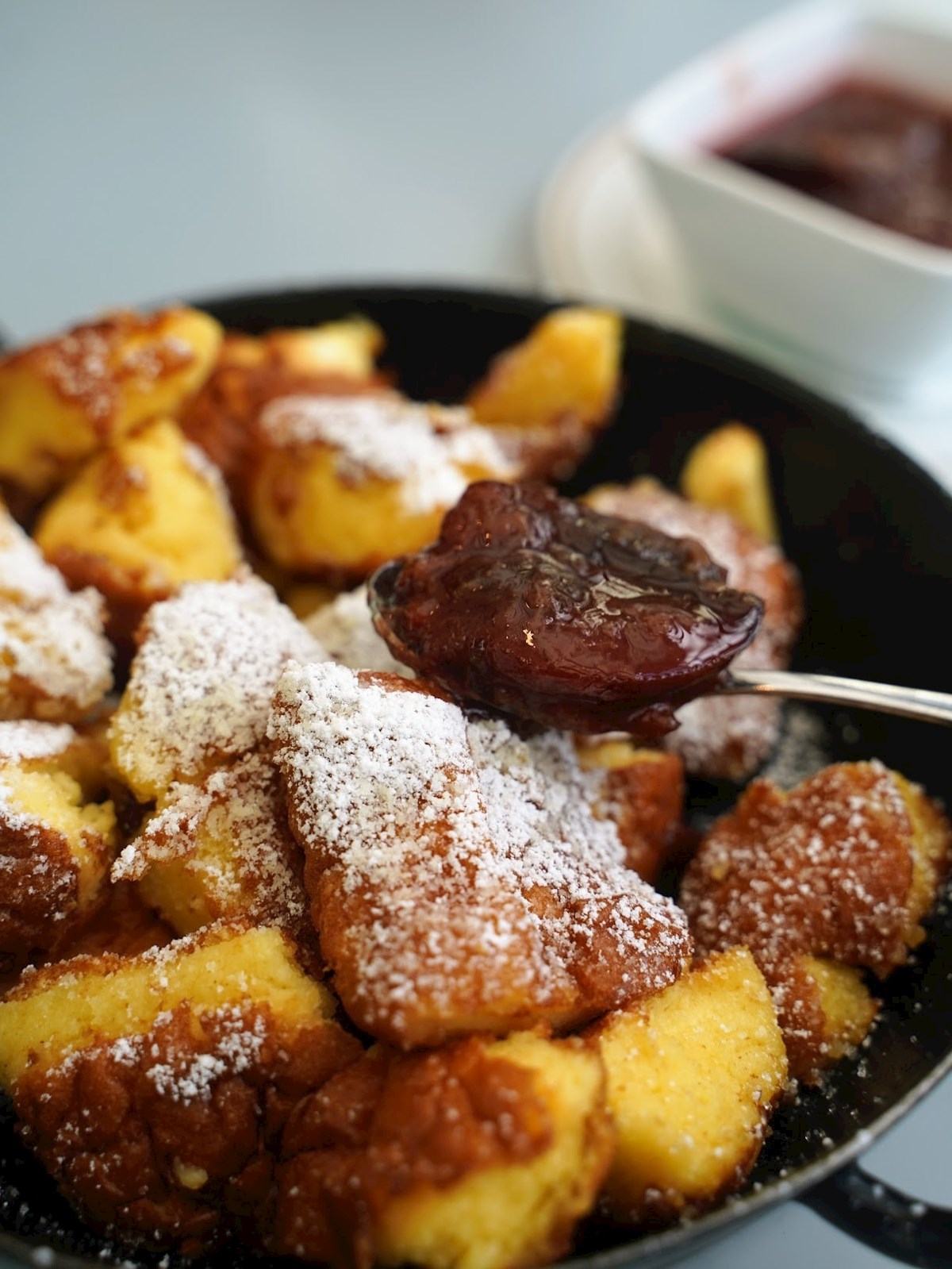
After that, the waiter will come to you and quite obtrusively demand a tip, completely untypical for Vienna.
He got a comment from me about the unacceptably awful stew, as well as the full plate of it back for the kitchen. The goulash was still charged in full. No problem, but never again. ¯\_(ツ)_/¯
LANDTMANN’S WIENER SCHNITZEL: 4.5/5
GRINZING
We spent the afternoon in the Grinzing district, which you need a 20-30 minute of a pleasant tram ride to get to. What a wonderful part of Vienna, yet undiscovered for tourists.
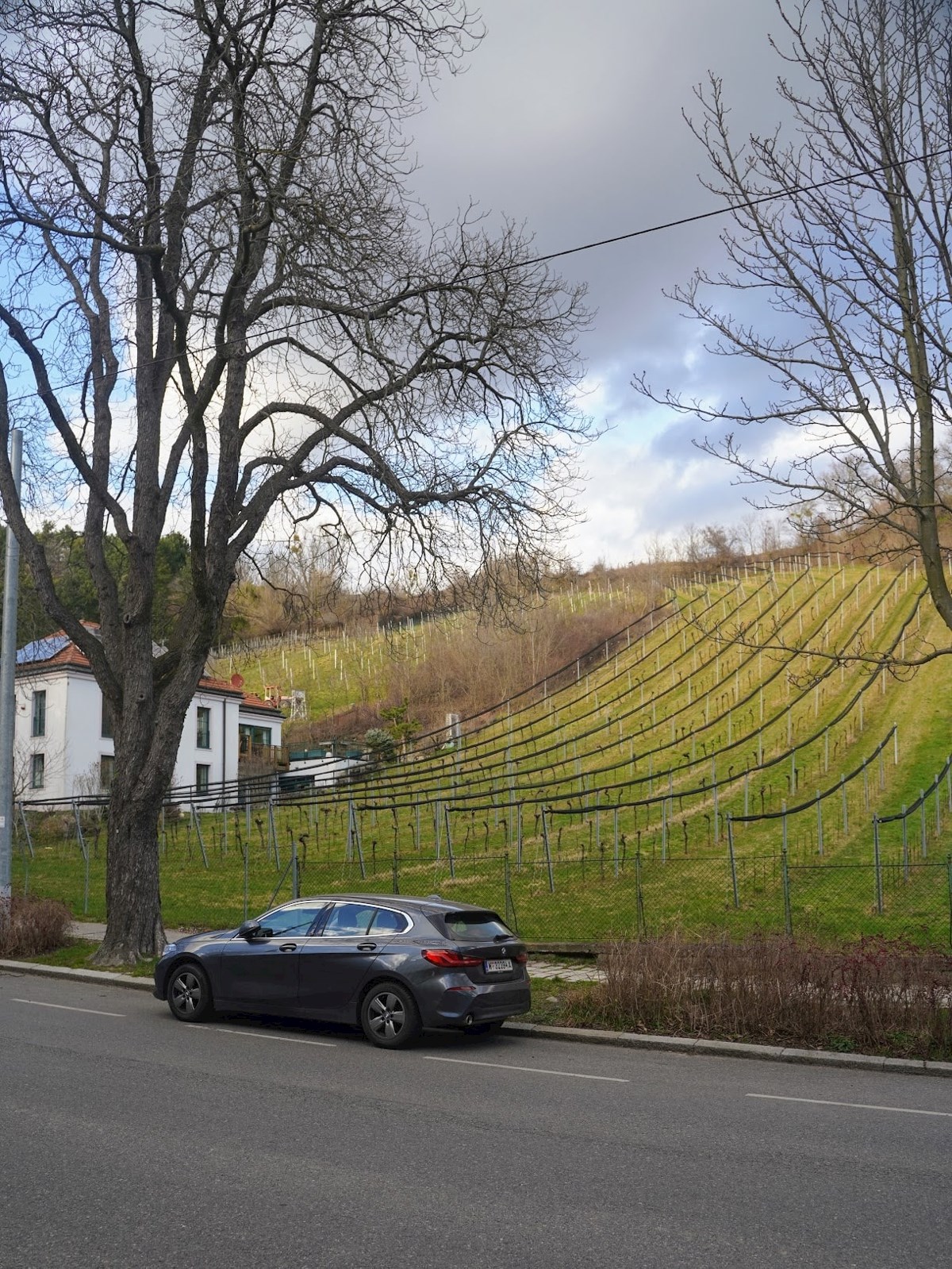
Be sure to visit it and take a walk among vineyards (yes, in the city) and charming houses. Although there are apparently wonderful wineries, wine shops, and restaurants, we did not eat here because we were saving ourselves for dinner. There are just a few days left and more than a few restaurants on our to-eat list.
575 SAGMEISTER
One of them is 575 Sagmeister. This restaurant is not a Viennese classic nor it has a cult status, but it has great Google ratings and some trustworthy local recommendations.
The restaurant is located in a neighborhood that is not particularly nice, and the atmosphere of Sagmeister is a little unusual too. The space is not traditionally decorated, it is too bright, and the motif of the entire decoration is trolls. OK.
But the food is what we came for.
The Wiener Art steak was very correct (4/5), thin and crispy.
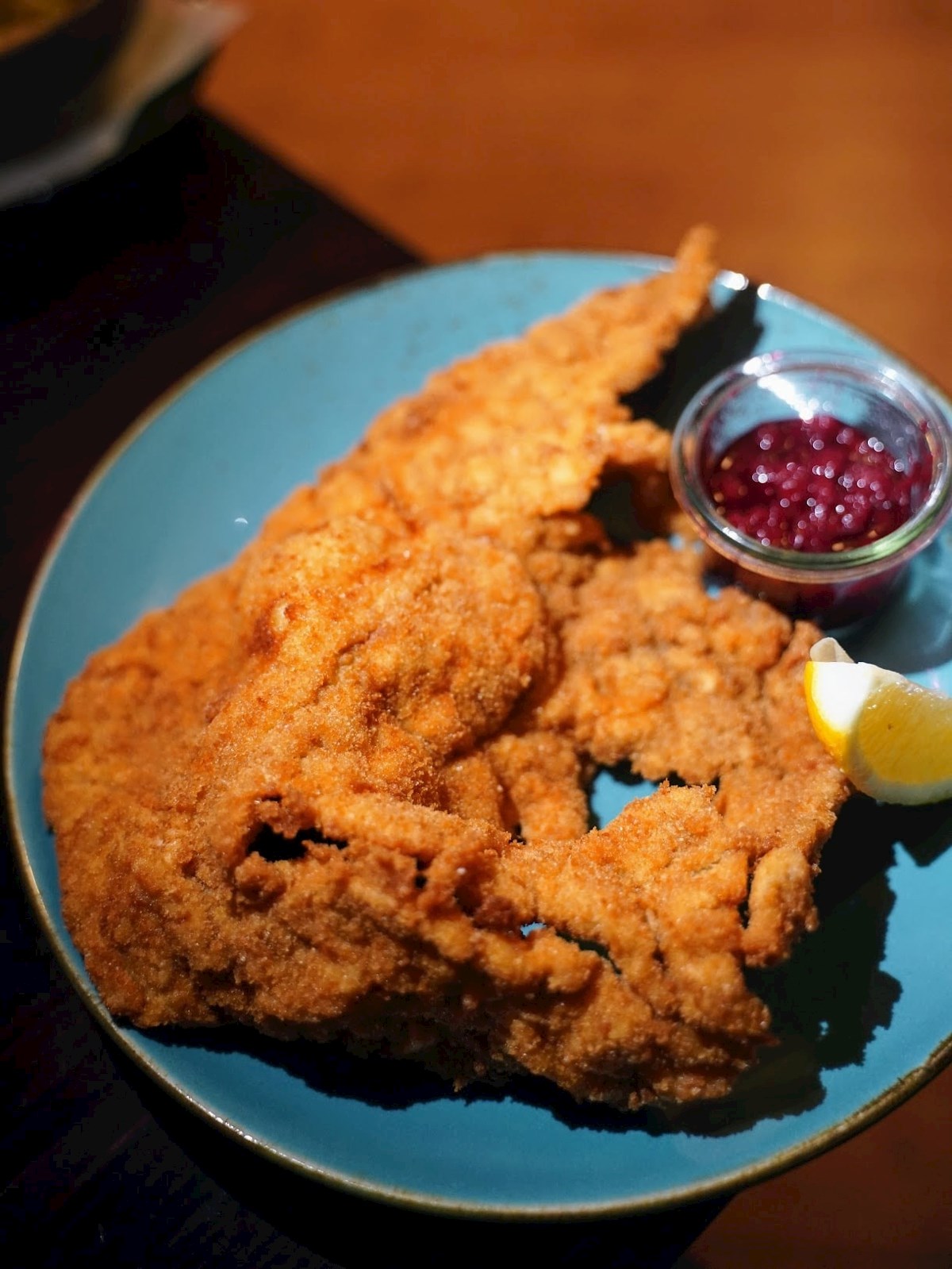
The star of this restaurant, however, is the goulash (thank God for washing away that midday horror from Landtmann). Sagmeister enriches their goulash with dark chocolate and beer, but the taste still does not deviate from tradition.
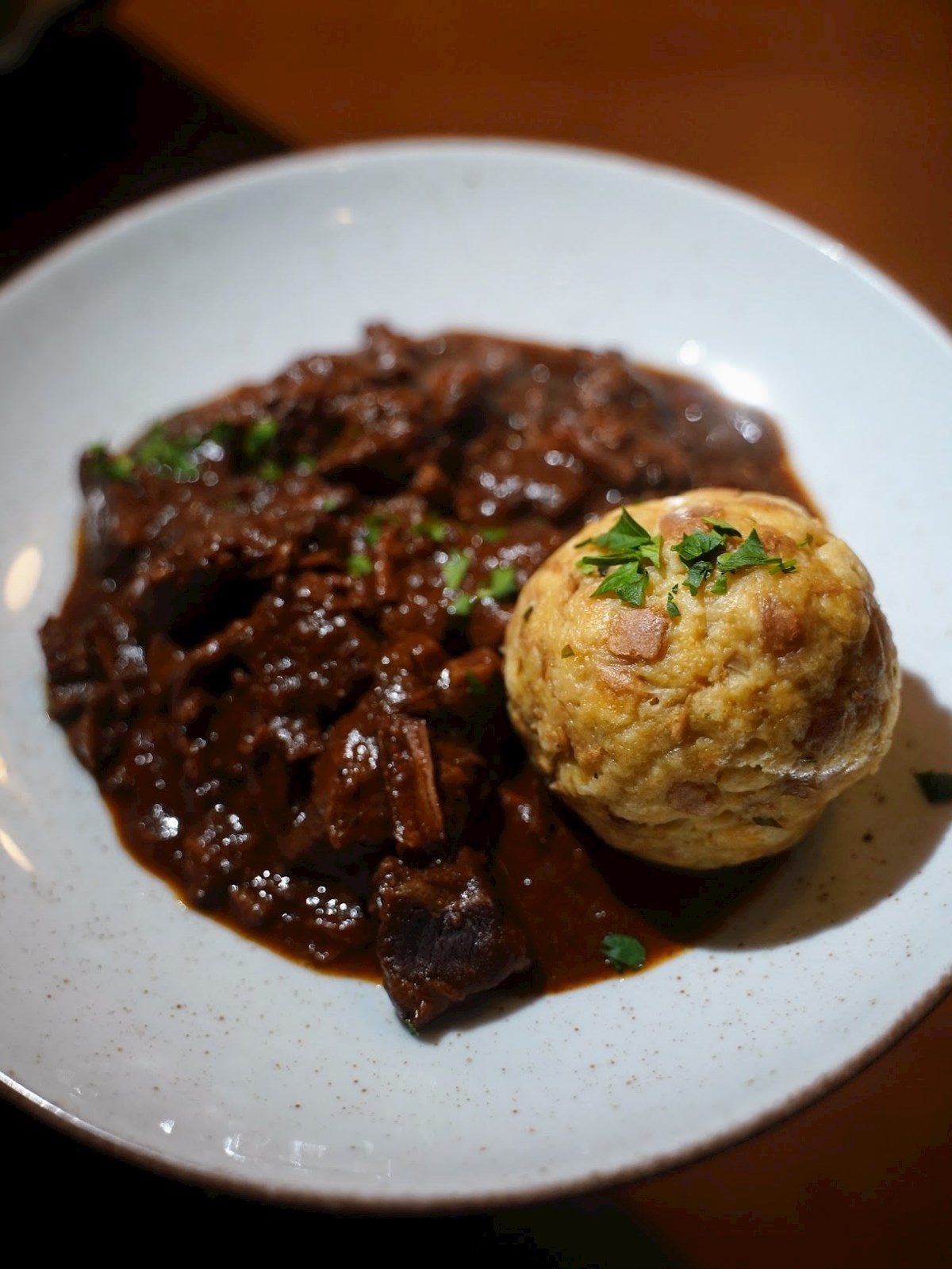
After Zum Sieg, this is the best goulash we’ve tried in Vienna so far. But nobody beats Zum Sieg, so… Recommendations!
SAGMEISTER'S SCHNITZEL WIENER ART: 4/5
DAY TEN: FIGLMÜLLER & CAFE CENTRAL & FISCHERIE
FIGLMÜLLER
The tenth day came, and we had to go home. Bye Vienna, you’ve been good to us!
…
Just kidding, you don’t think we really went in search of the best Wiener schnitzel and didn’t go to Figlmüller?
Figlmüller is the worldwide institution for Wiener Schnitzel, as well as one of the most famous symbols of Vienna in general.
On every blog post these days about places where we tried schnitzels, people commented: go to Figlmüller, go to Figlmüller! Web is full of Figlmüller! Almost 20 thousand people recommend it on Google, though the surnames of those recommending it are suspiciously American, Slavic, Italian, or Spanish.
A tourist trap, some Viennese will whisper to you.
Of course, we visited it with our Slavic surnames, as we have probably done twenty times in our lives, but this time for the first time on assignment.
Figlmüller has two, almost merged, main restaurants in the strict center. In addition, there are two restaurants under other brands, Lugeck and Figls, of which Figls is said to be excellent.
In order not to stand in line, which in the evening sometimes takes over half an hour - even though the restaurant is huge, we reserved a table in the bigger Figlmüller in advance.

Although the blog is called “in search of the best Wiener schnitzel”, we actually ordered a Wiener Art Schnitzel (pork) rather than a true Wiener schnitzel (veal). Because that is simply what is supposed to be ordered at Figlmüller. Even if you ask the waiter what he recommends, he will recommend the Wiener Art Schnitzel.

So paradoxically, by far the most famous Viennese schnitzel in the world is not a real Viennese schnitzel at all.
And what is that famous Figlmüller like? Absolutely reliable and every time great. Always perfectly beaten. Always the same size (that’s bigger than the big plate), and always crispy. Always served by friendly waiters (someone from Landtmann should secretly come here for training) at an acceptable price, though slightly high for a pork schnitzel.
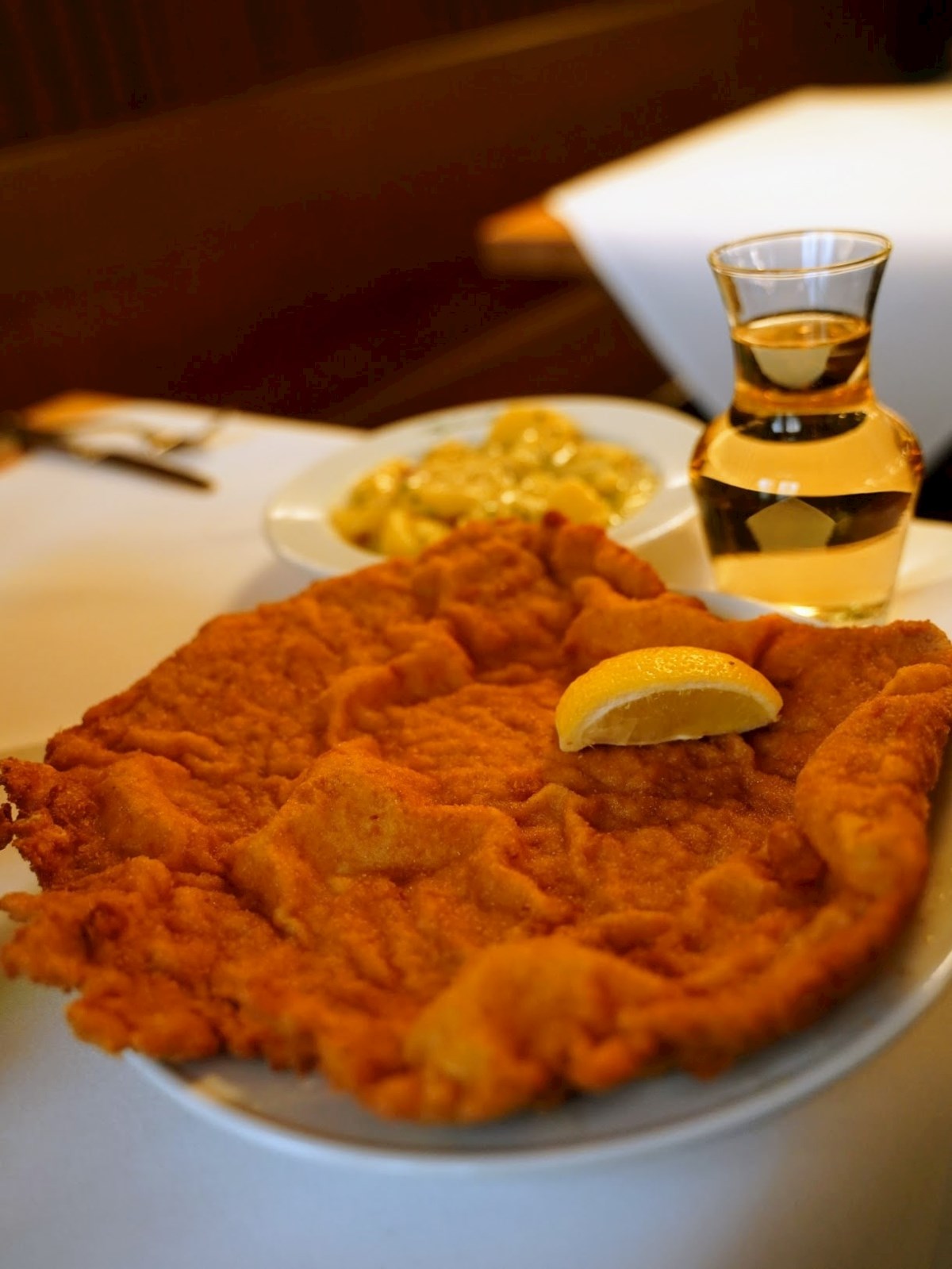

It’s not better than the real Viennese schnitzel in Stasta though, sorry Fig! But still, absolutely every time we are in Vienna we will continue coming to Figlmüller. And even if it is some kind of a tourist trap, dear Viennese, I always want to fall into it.
FIGLMÜLLER'S WIENER ART SCHNITZEL: 4.5/5
CAFE CENTRAL
Cafe Central is one of the historical places you must visit in Vienna. We managed to squeeze it into our schedule even though we couldn’t eat another schnitzel so fast.

Just to eat nothing but Cafe Melange, or just a cake, Cafe Central is worth a visit.
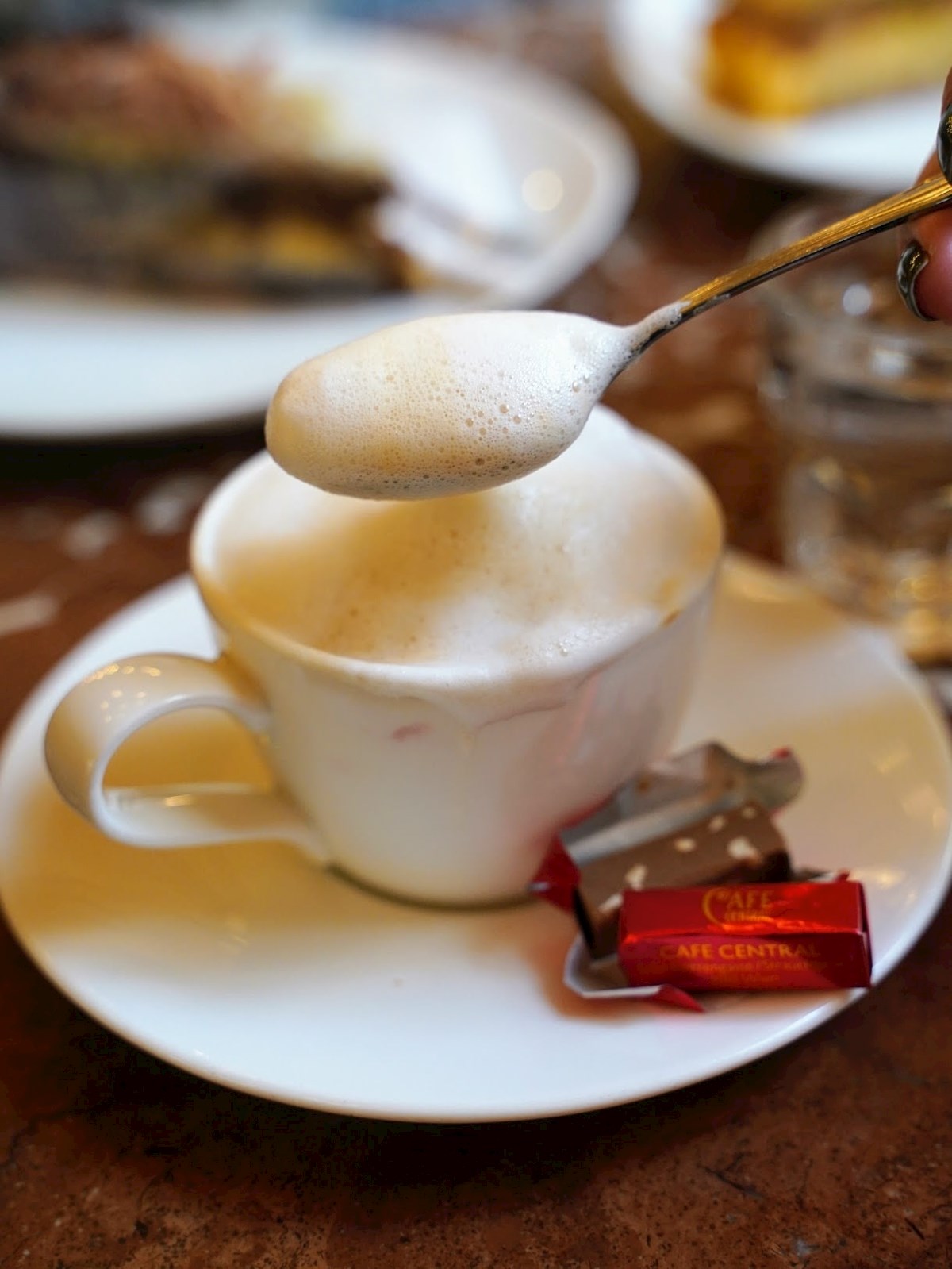

The wonderful atmosphere, this time enhanced by a gentleman playing the piano, will take you back to some old Viennese times. Although there is no need really, because 2023 is maybe nicer than going back to old times and meeting Hitler or Trotski in, their favorite, Cafe Central.
FISCHERIE
Yes, we are pigs. For dinner, we squeezed in another restaurant, Fischerie. We didn’t regret it.
This is a great, relatively new, fish restaurant. But not a typical “scrape everything from the bottom of the ocean and screw the next generation” fish restaurant.

All fish are Austrian river and lake fish, local, caught by regular local fishermen today or yesterday.
We love Austrian saiblings; what a great fish, but this time we were lucky enough to “catch” an even better gem: golden trout! Wow! Wow! Just wow! What a fish, what a restaurant. Fisherie, such a lovely place.

BTW whoever told you that saltwater fish are better than freshwater ones, lied to you.
DAY ELEVEN: WILLI'S BEISL
WILLI'S BEISL
Before the trip from Vienna to Zagreb (and now we’re really leaving), we decided to visit a beisl (a term that refers to unpretentious Viennese local traditional food places) which is so local and probably so uninterested in non-local guests that it doesn’t even have a name on it. It says only Beisl on the door, and the Viennese know it as “Beisl in der Sigmundgasse”.

It’s full name, we learn from the menu, is Willi’s Beisl.
An appropriate and deserving place to end this adventure. A totally unassuming family restaurant with one gentleman (Willi?) cooking and one lady serving just a few honest traditional Viennese dishes at prices twice as cheap as almost any other beisl. And wines are even cheaper.

If you want to finally, at least for an hour, feel like a Viennese, not a tourist or traveler, come to Beisl in der Sigmundgasse and soak up the atmosphere.
As well as too much of riesling. But hey, you are not in Vienna every day. Or if you are, you’re one lucky bastard.
***
Ten days are simply not enough to try all the good Viennese schnitzels (because almost all of them in Vienna are at least “good”), and especially not all the good beisls and restaurants. We will have to give Vienna many more chances. Some of the restaurants (cafes, etc.) that we didn’t manage to visit this time, but we definitely plan to:
XXL RESTAURANT LEOPOLDAUER ALM
GASTHAUS ELSNER
PUERSTNER
SIXTA
GASTHAUS PÖSCHL
CAFE SACHER
PLACHUTTAS
RESTAURANT LUGECK
WIAZHAUS
RADO'S GASTHAUS
…and many many more.
